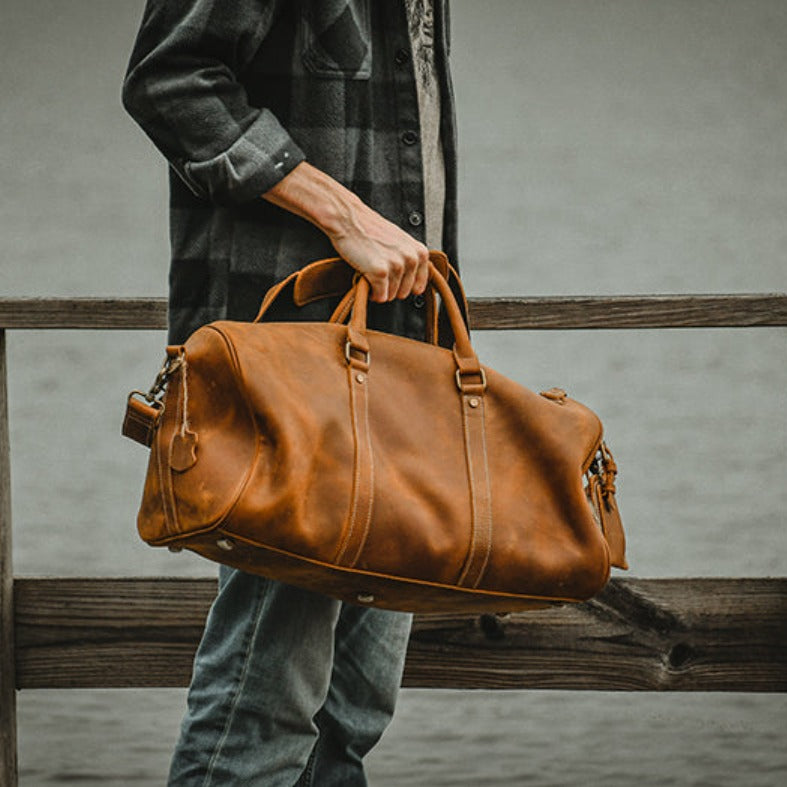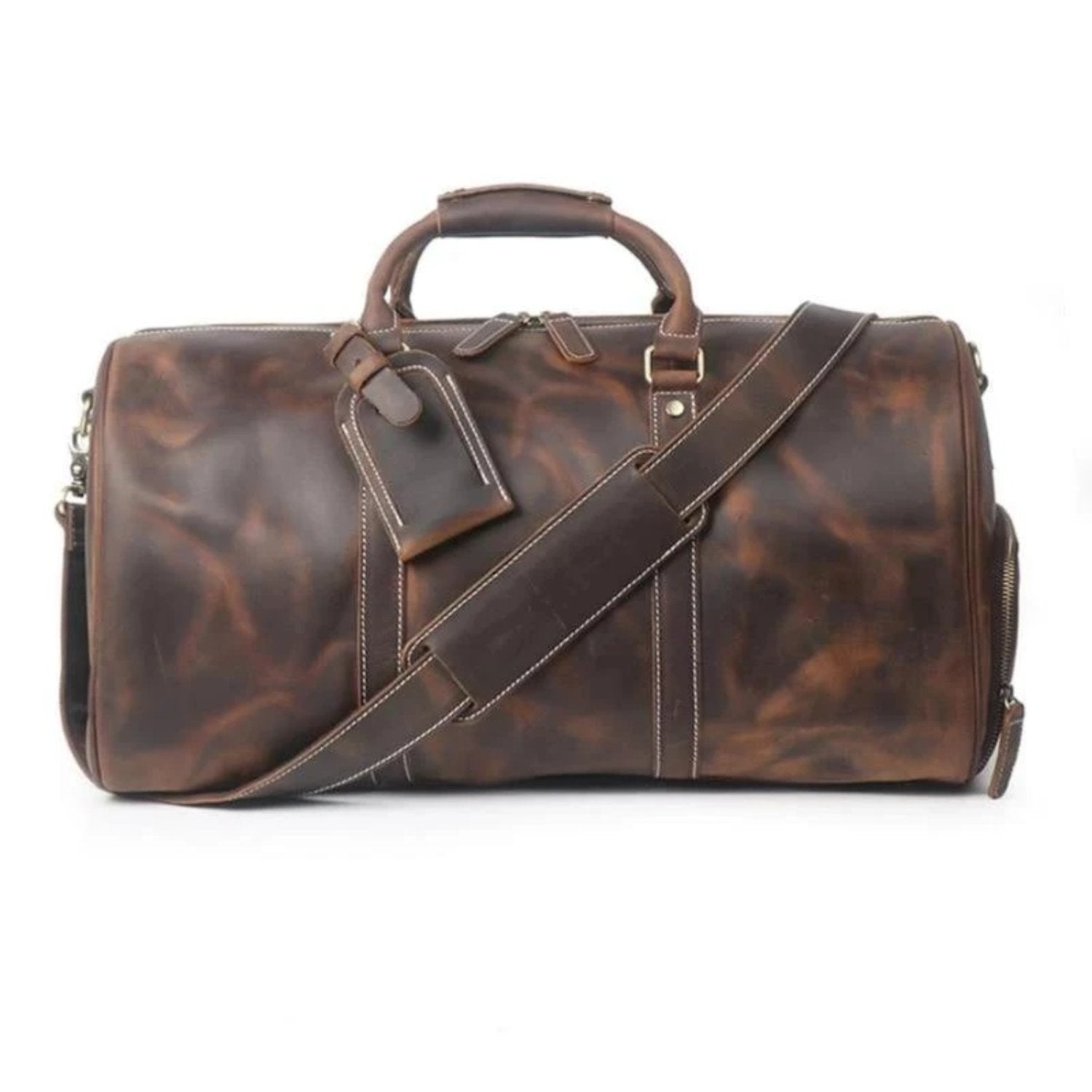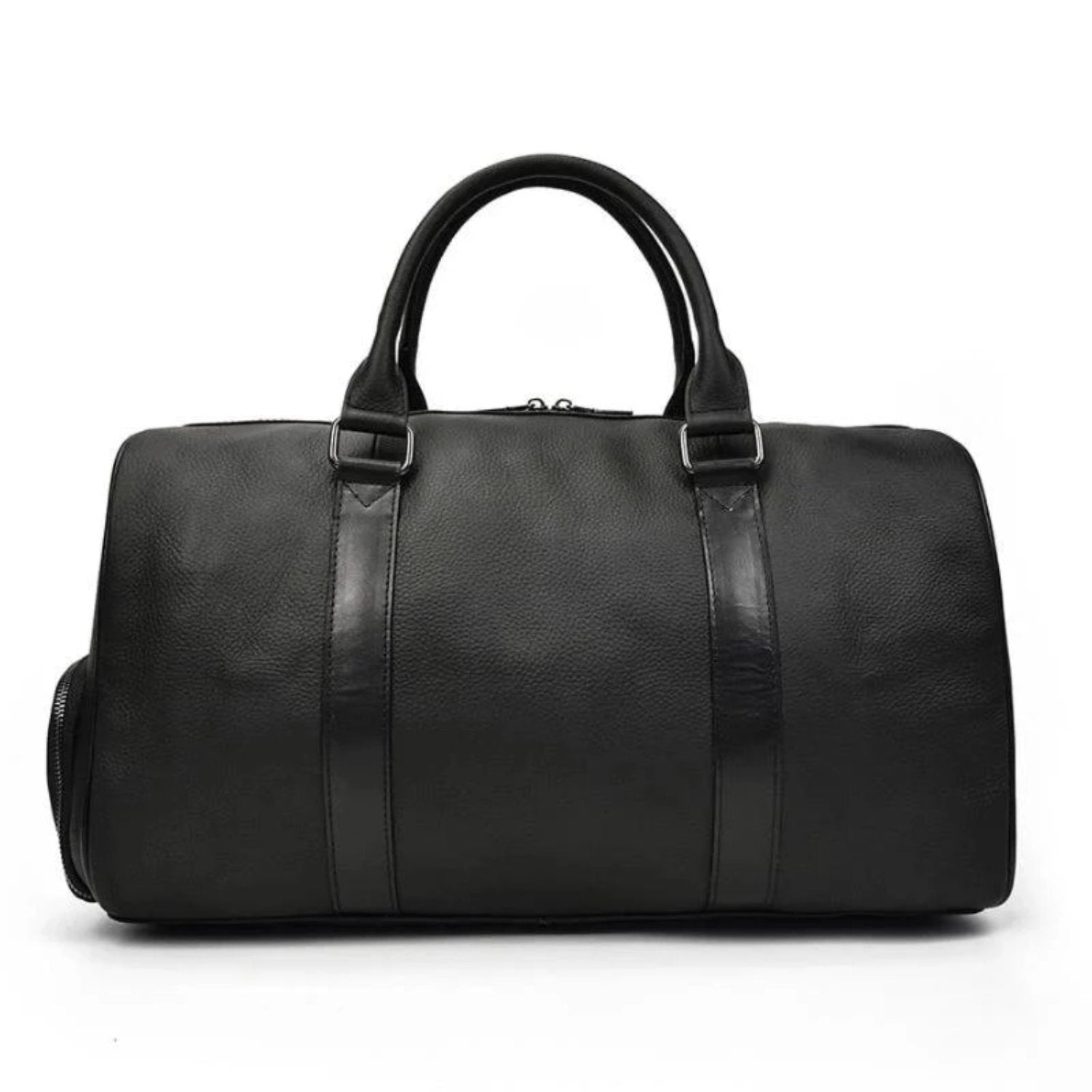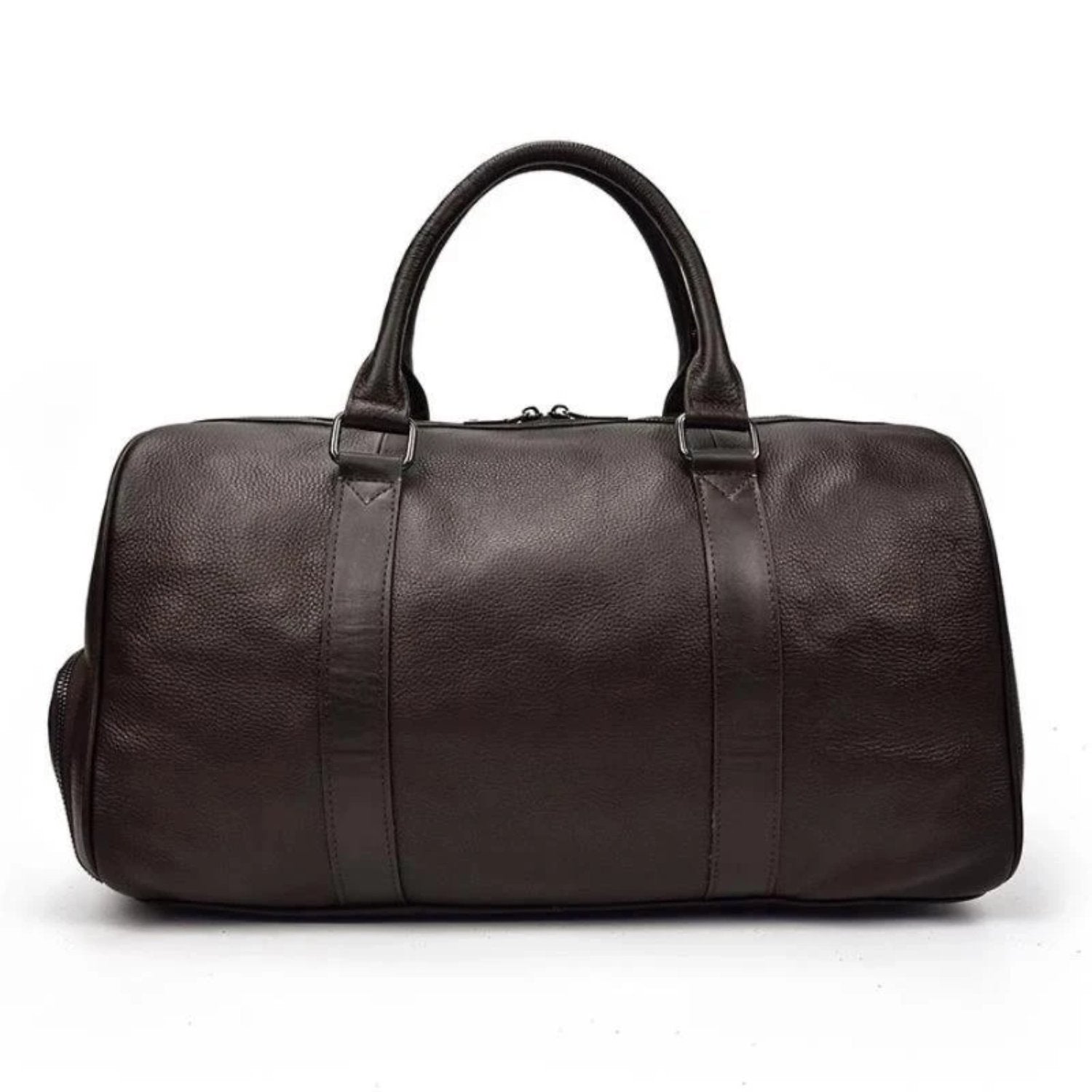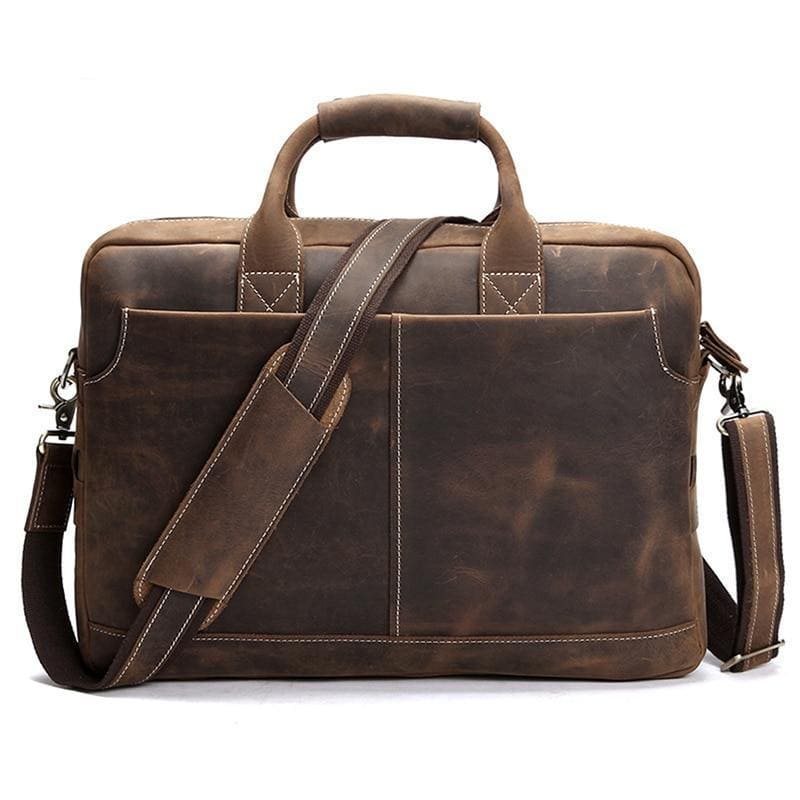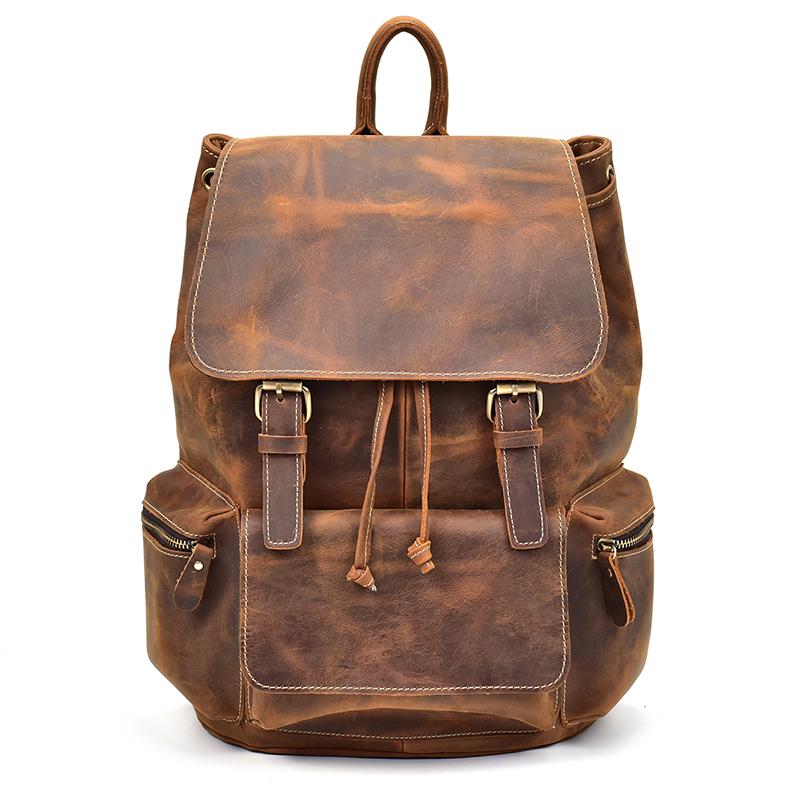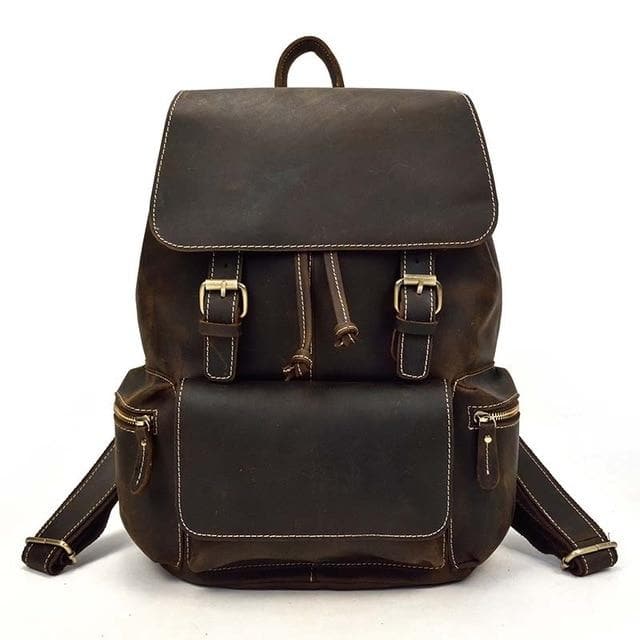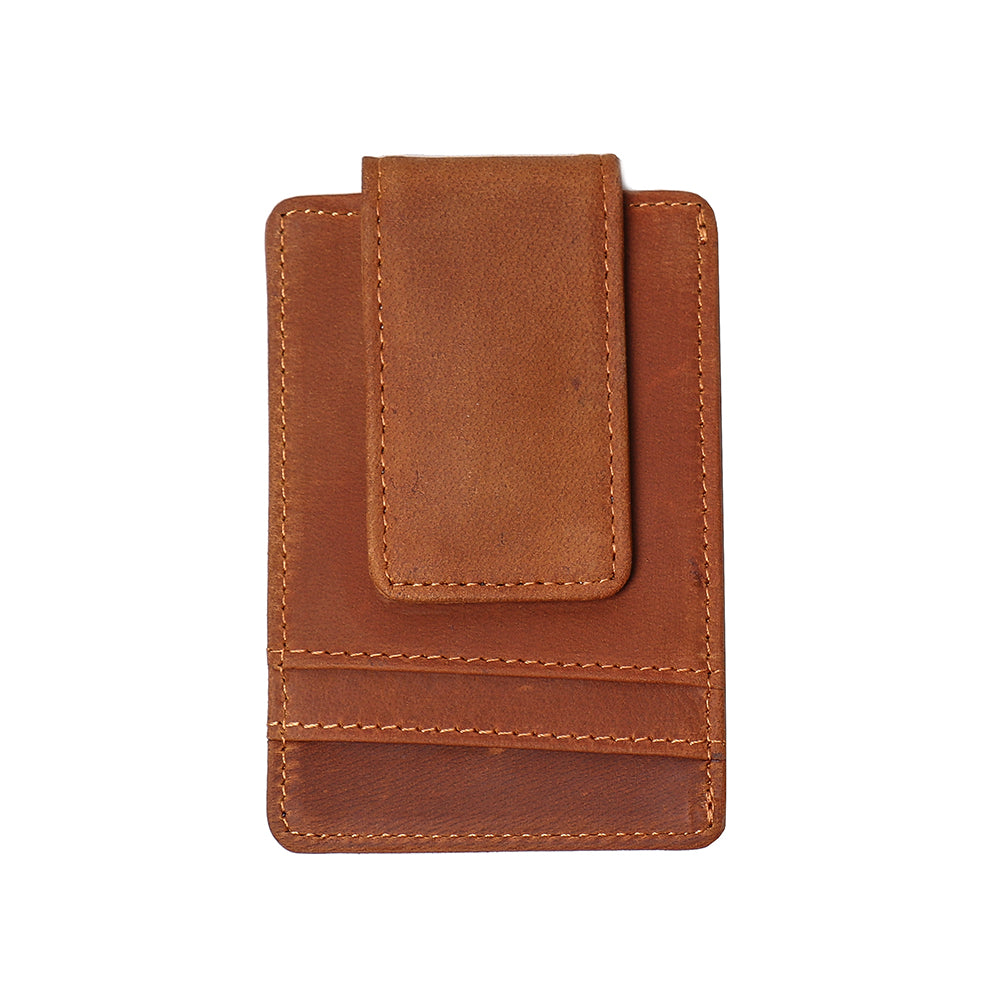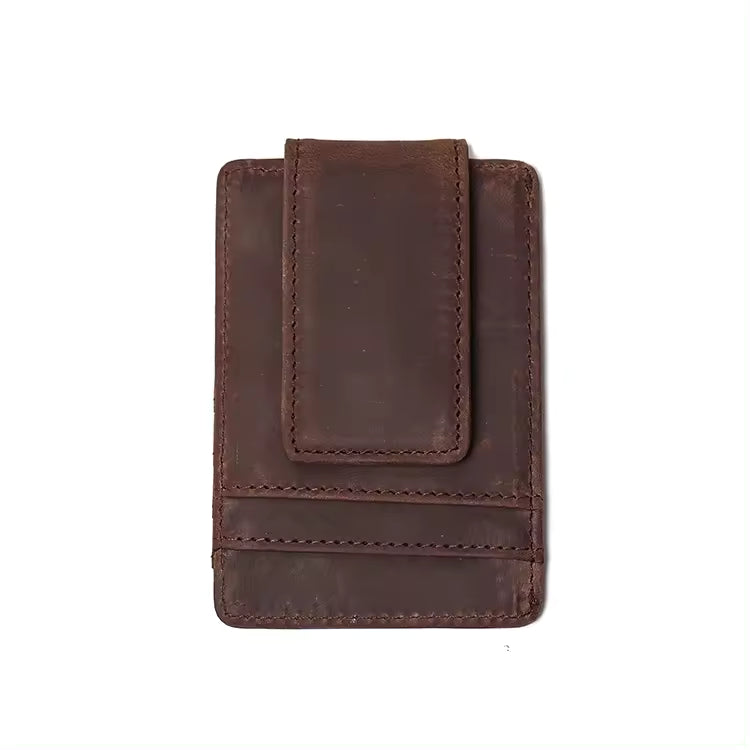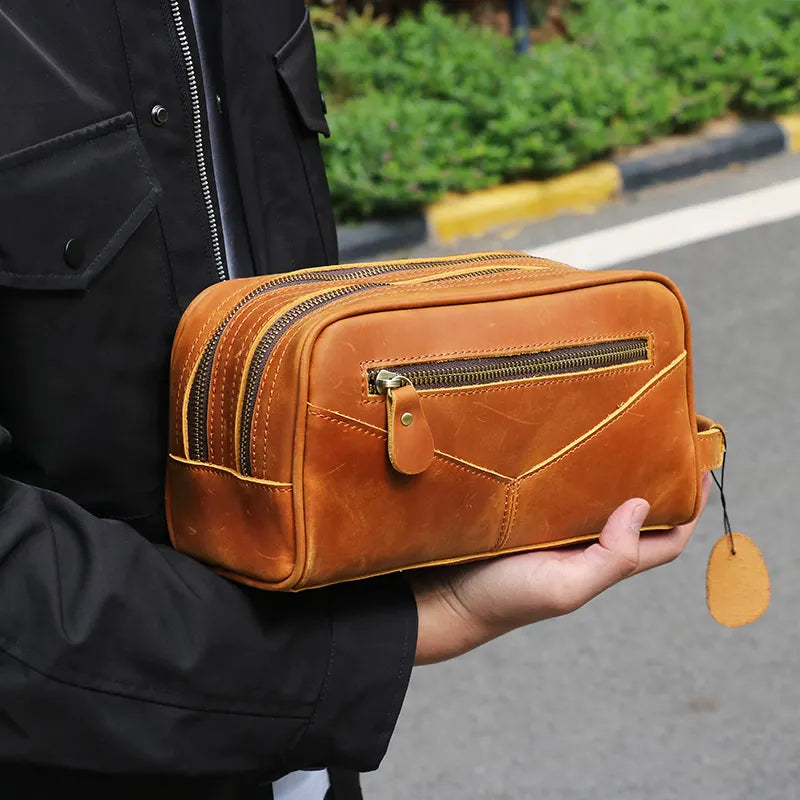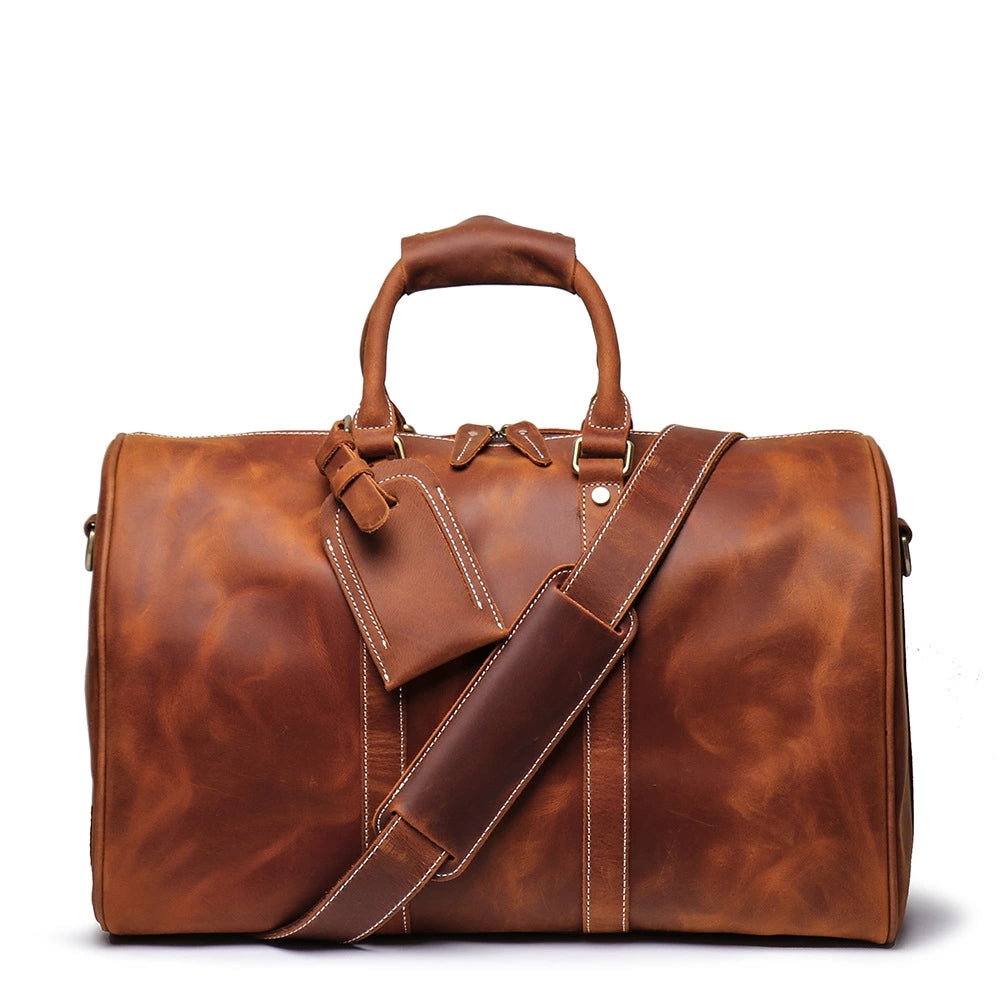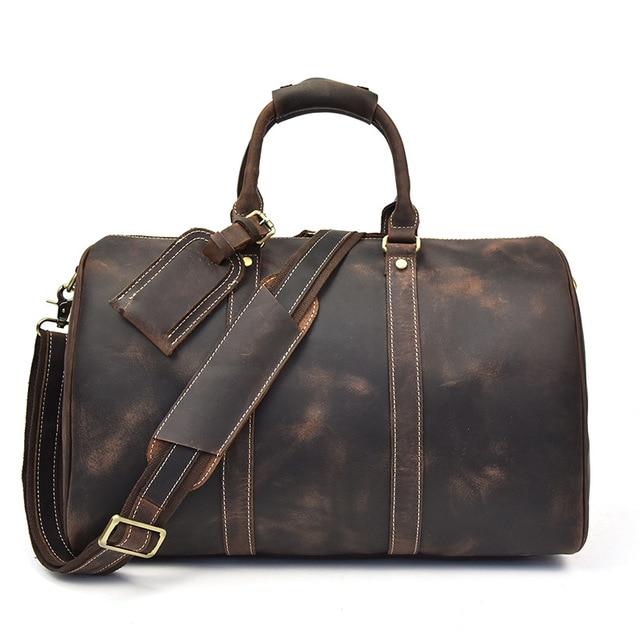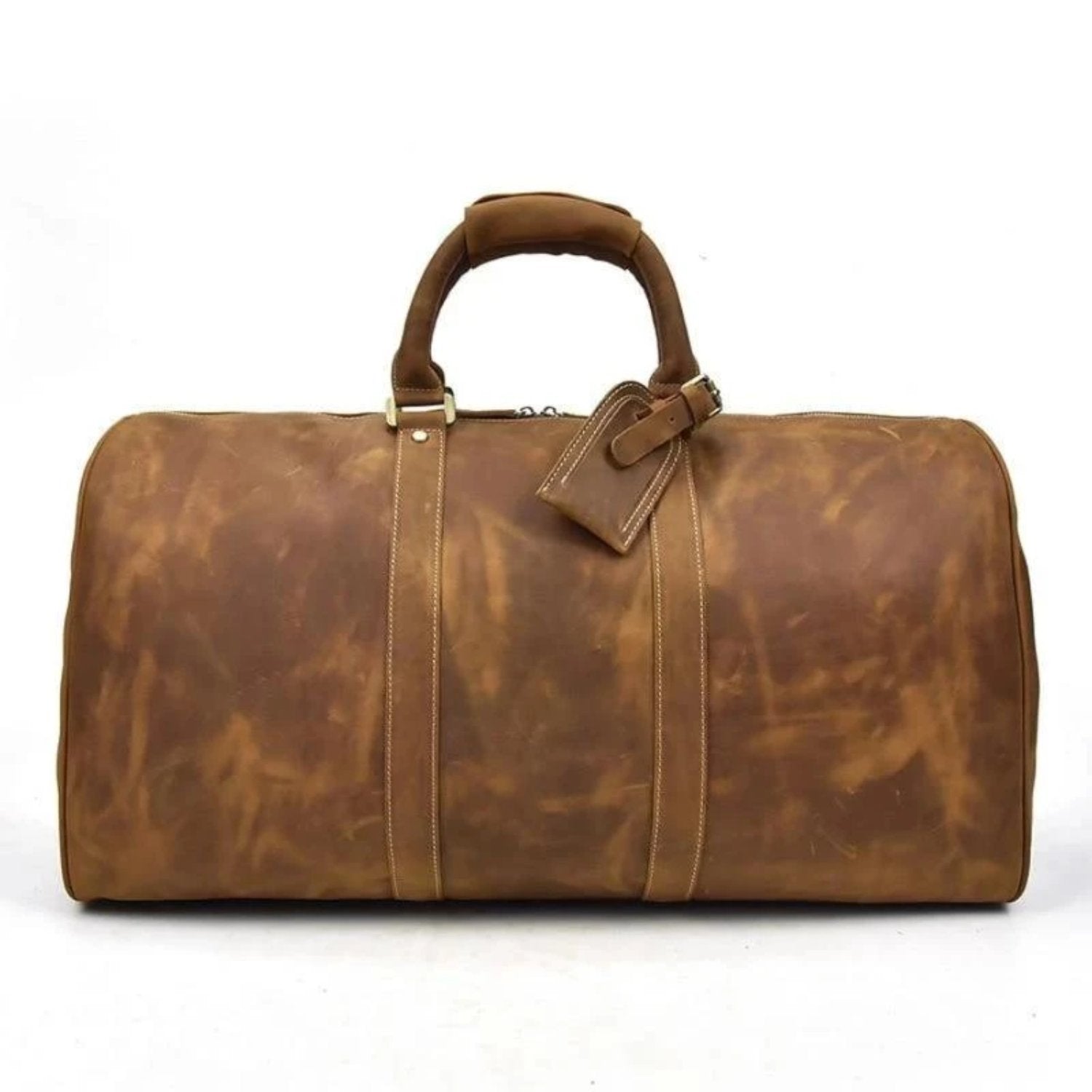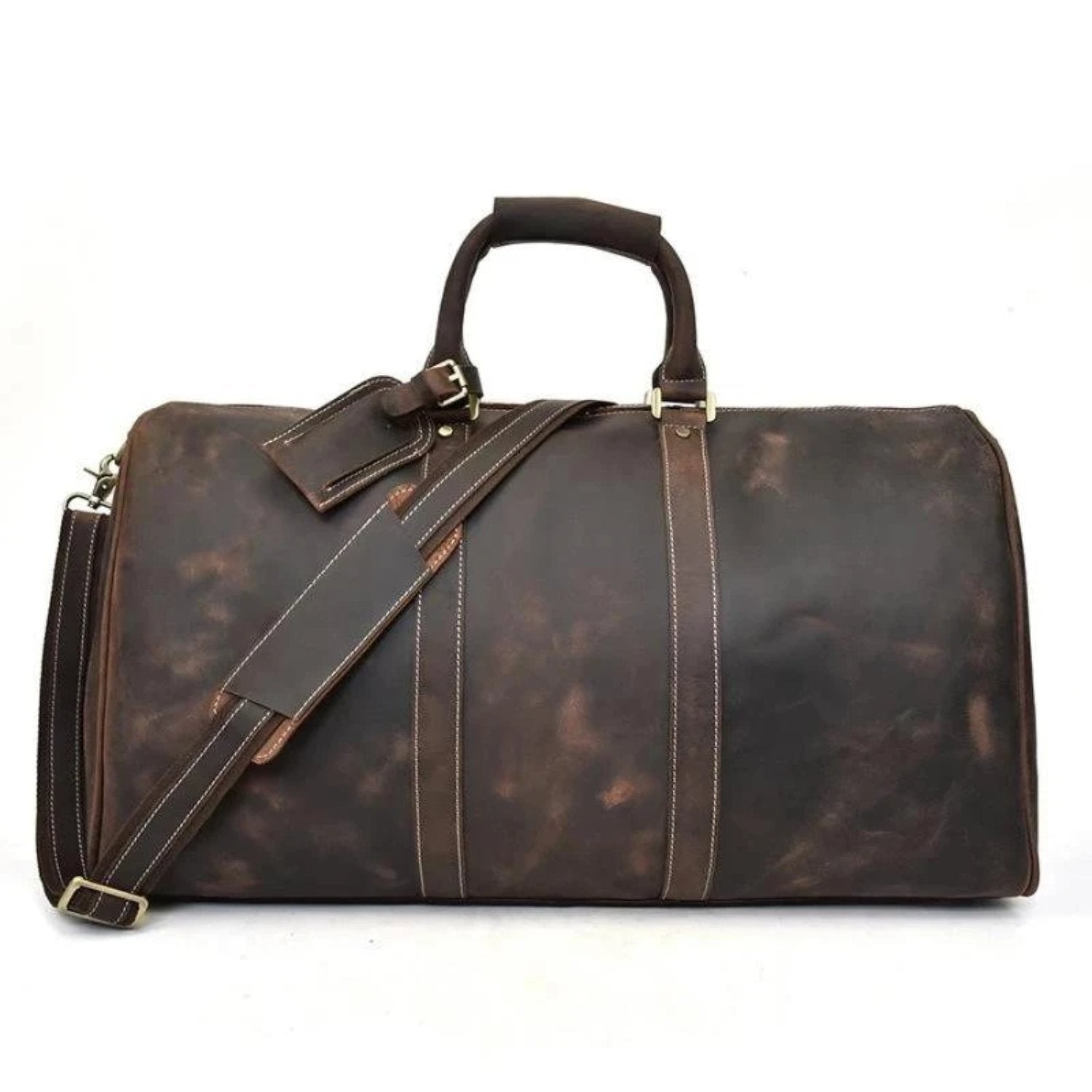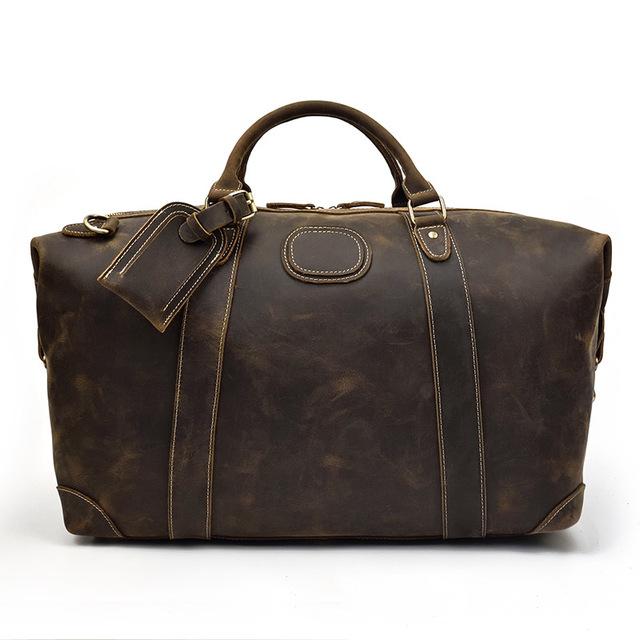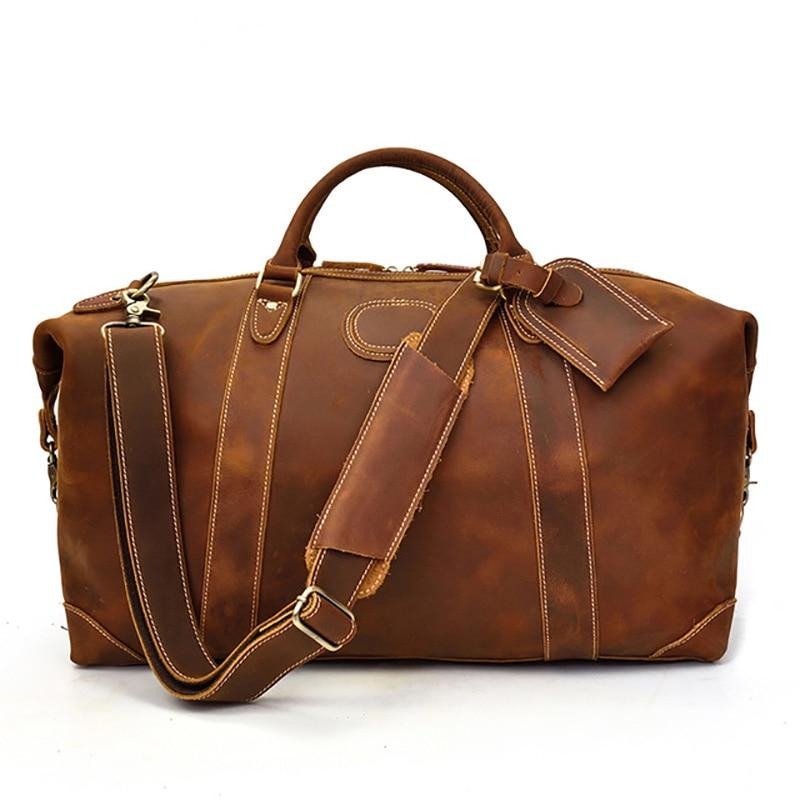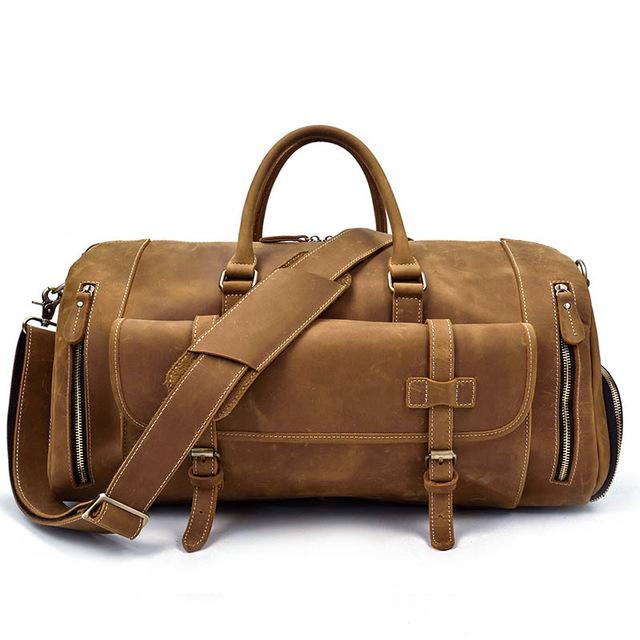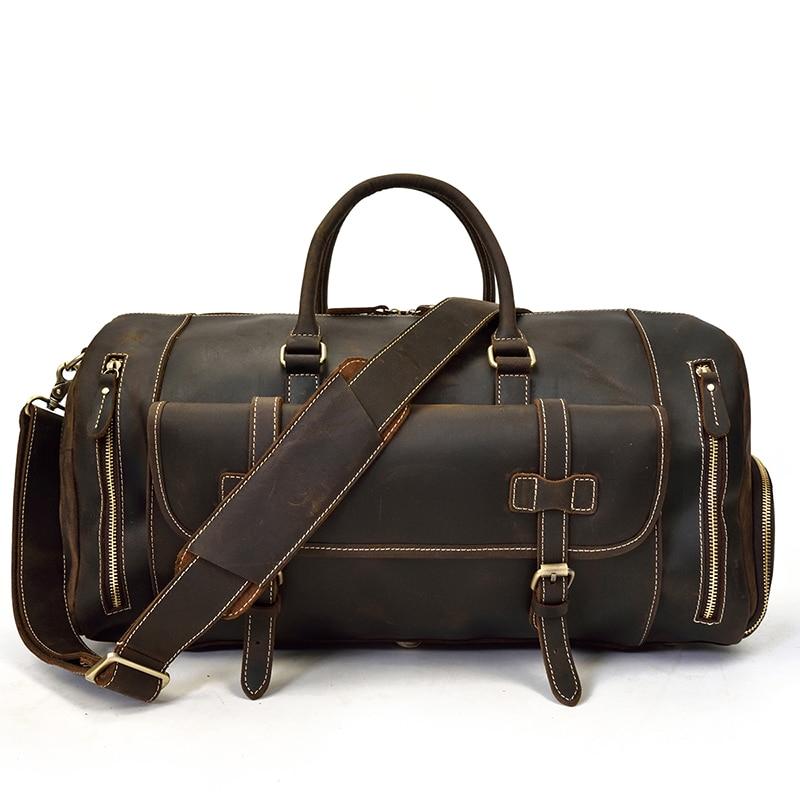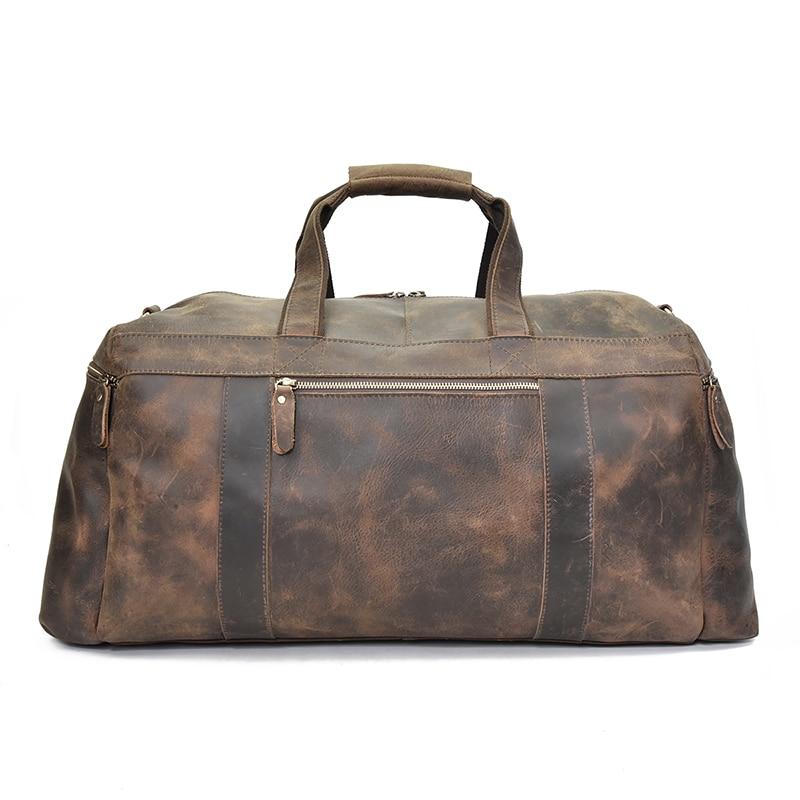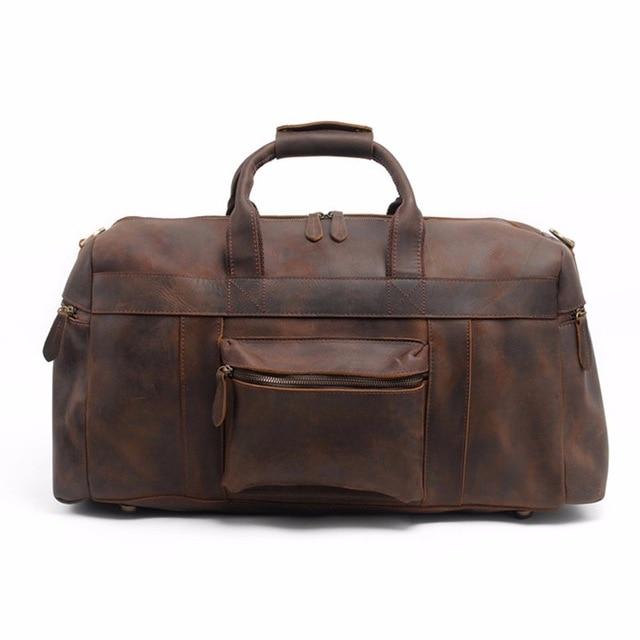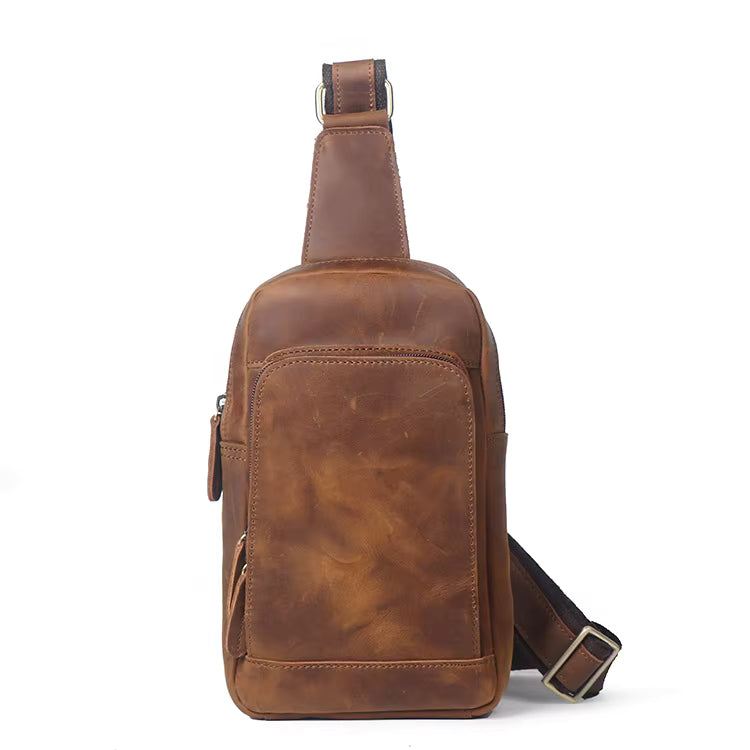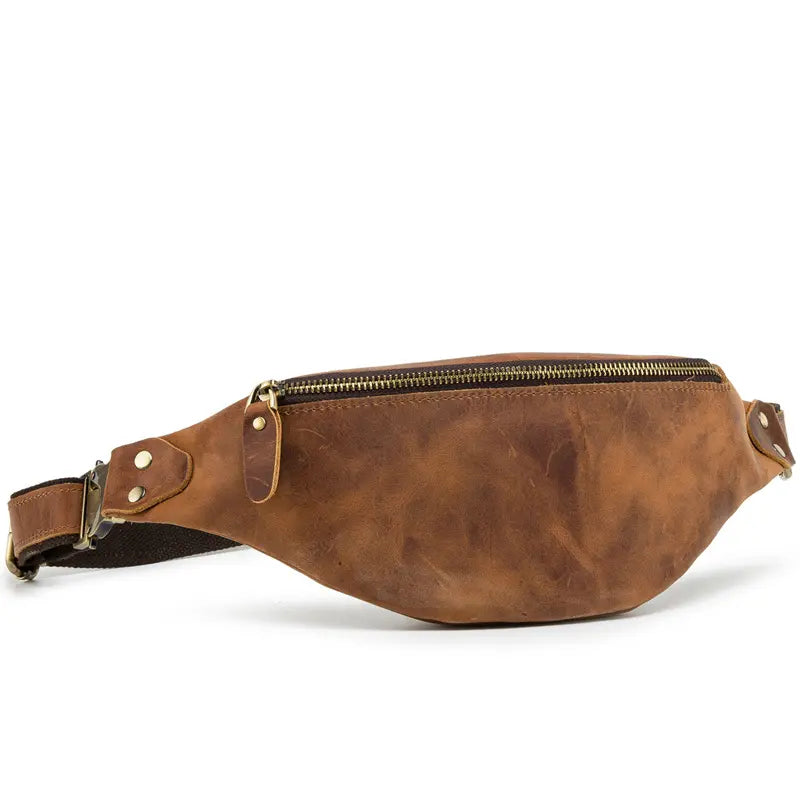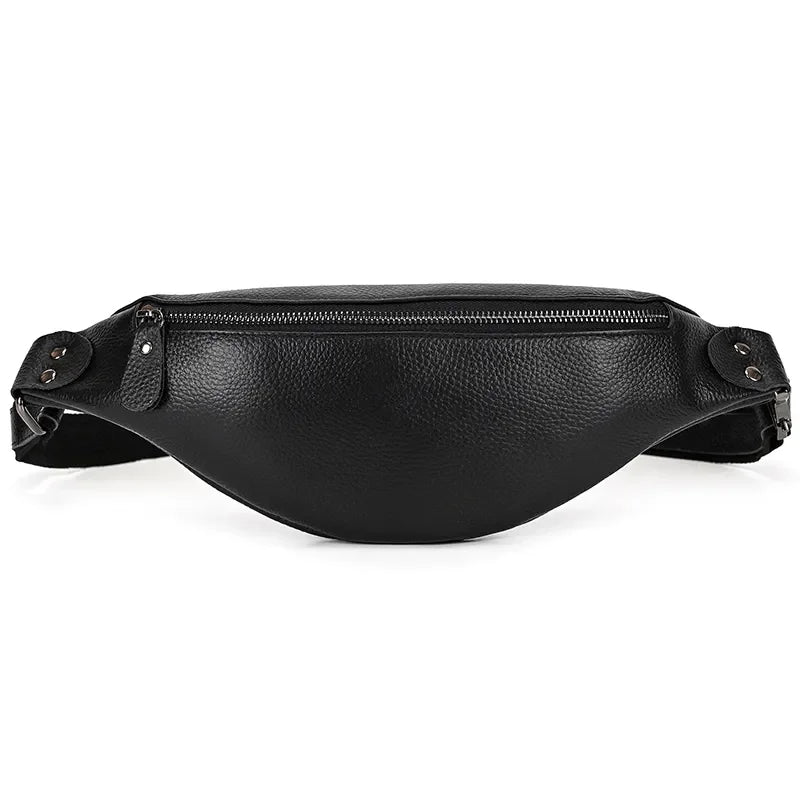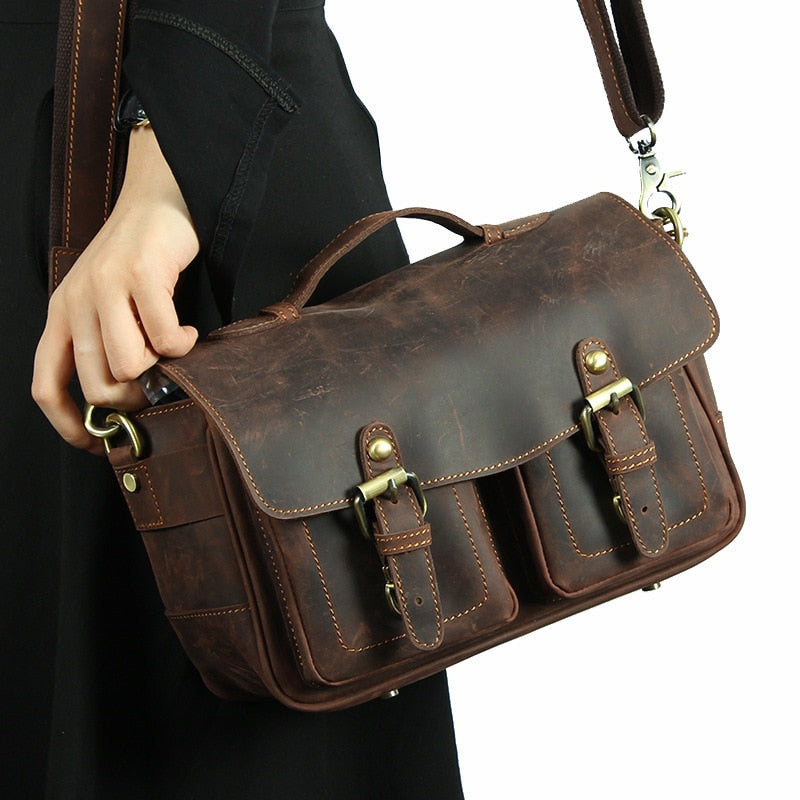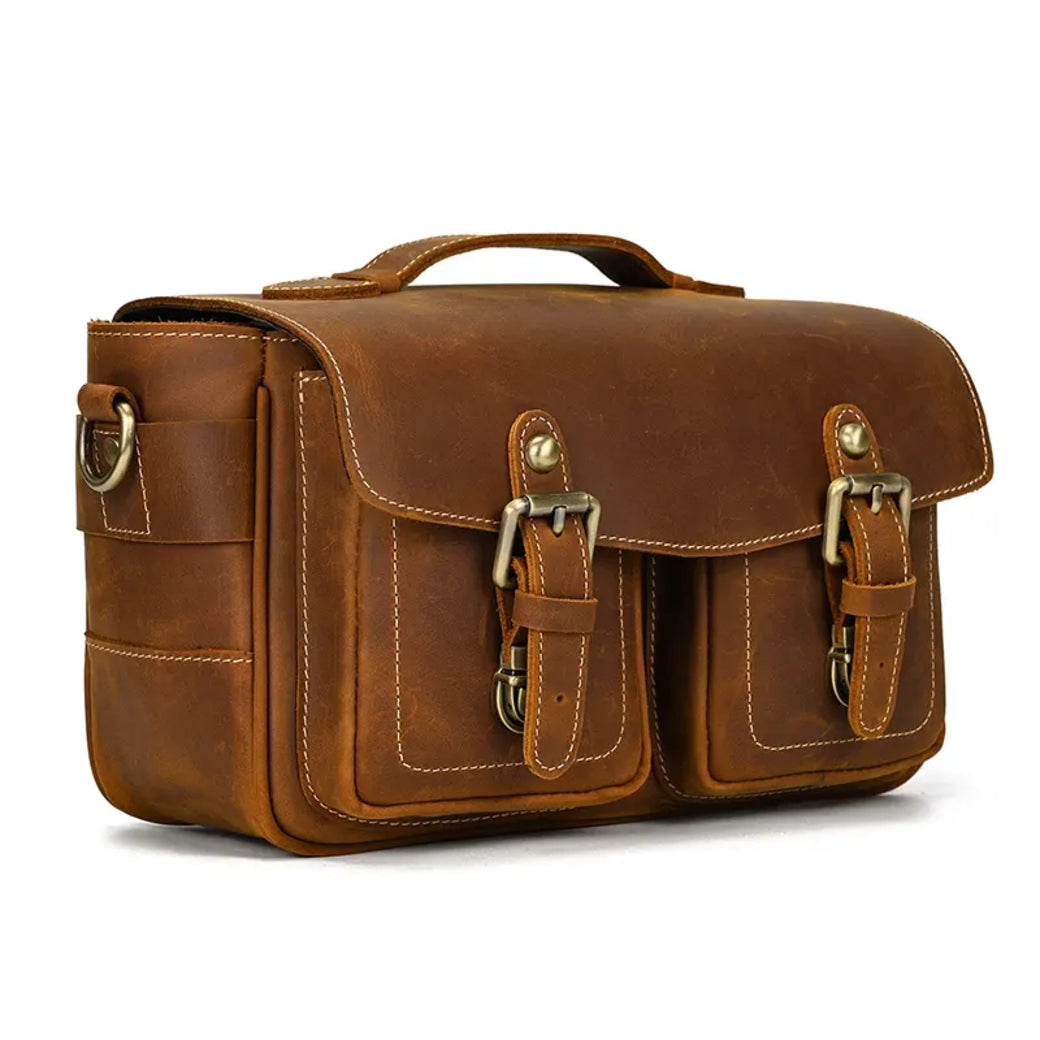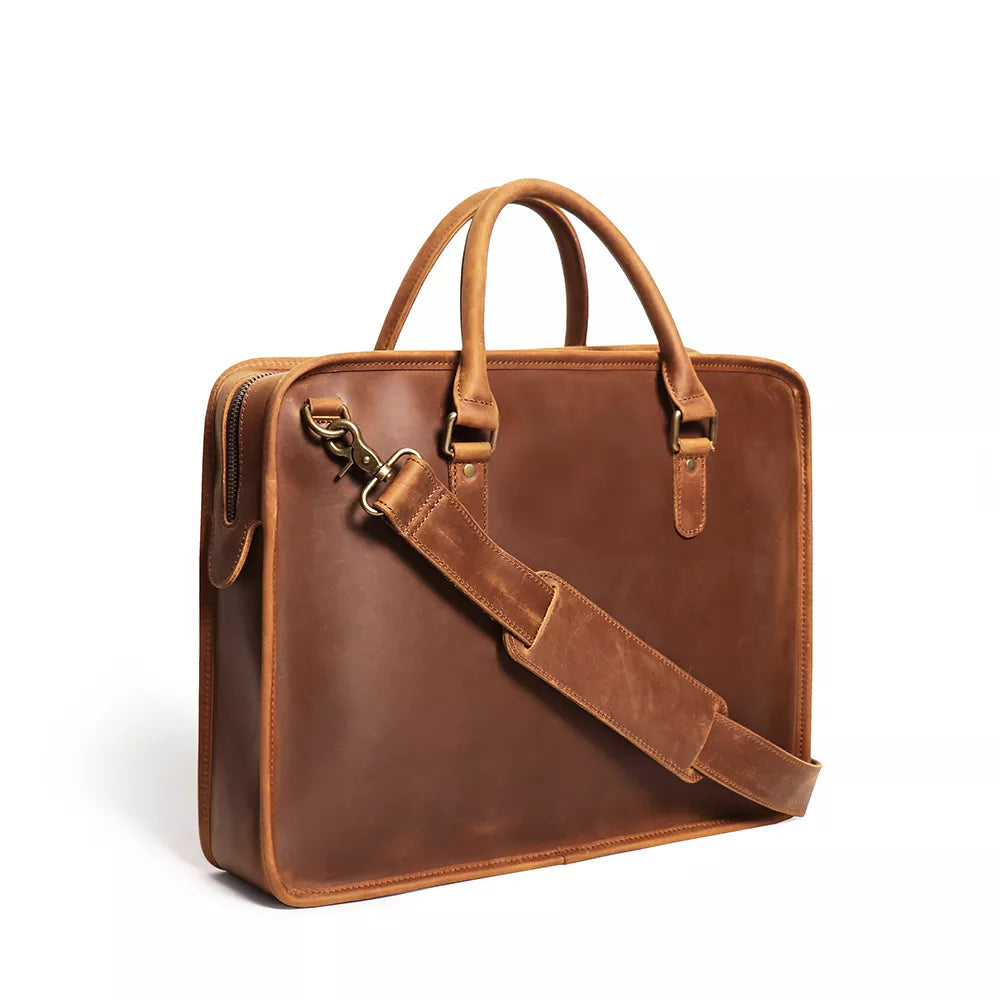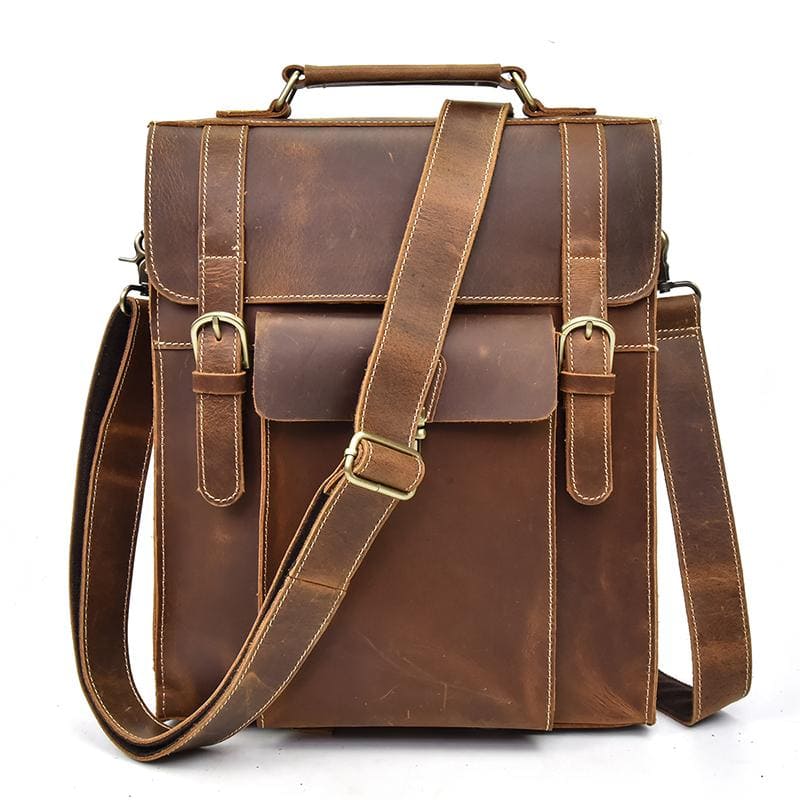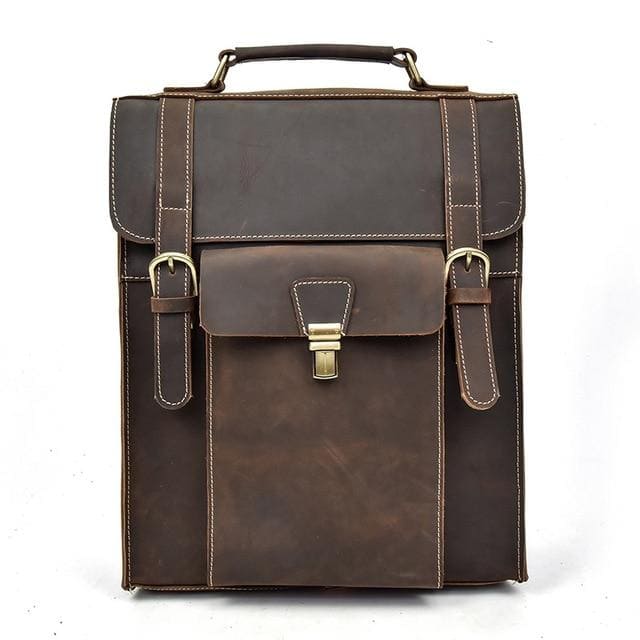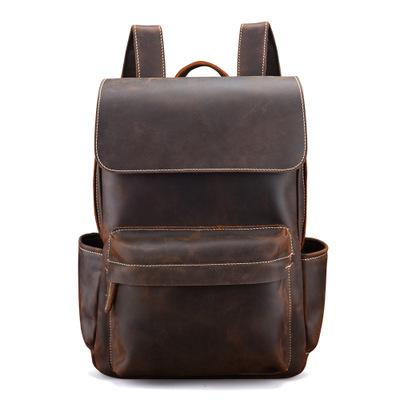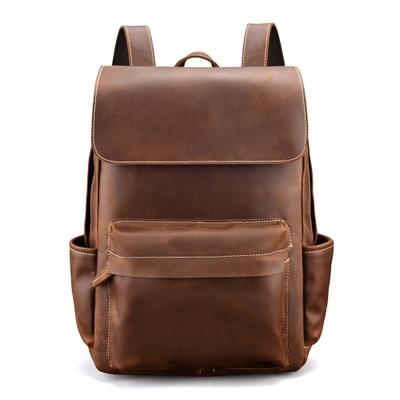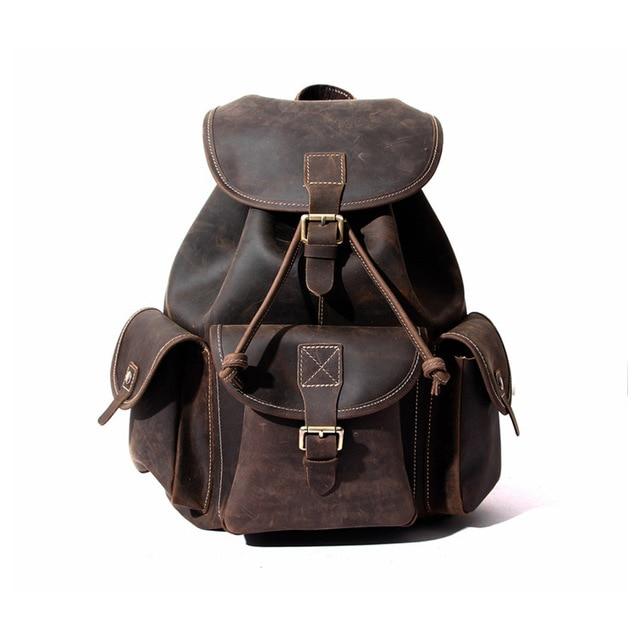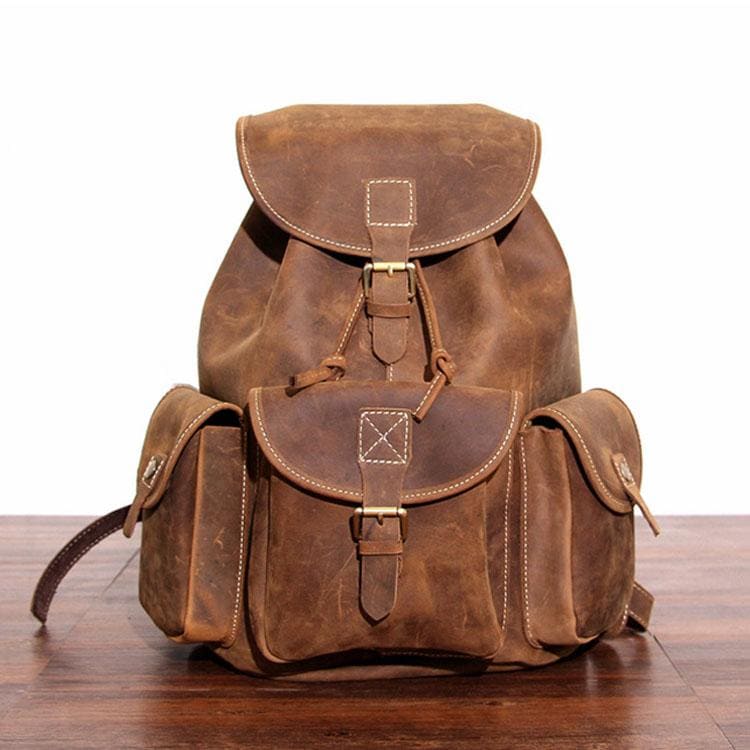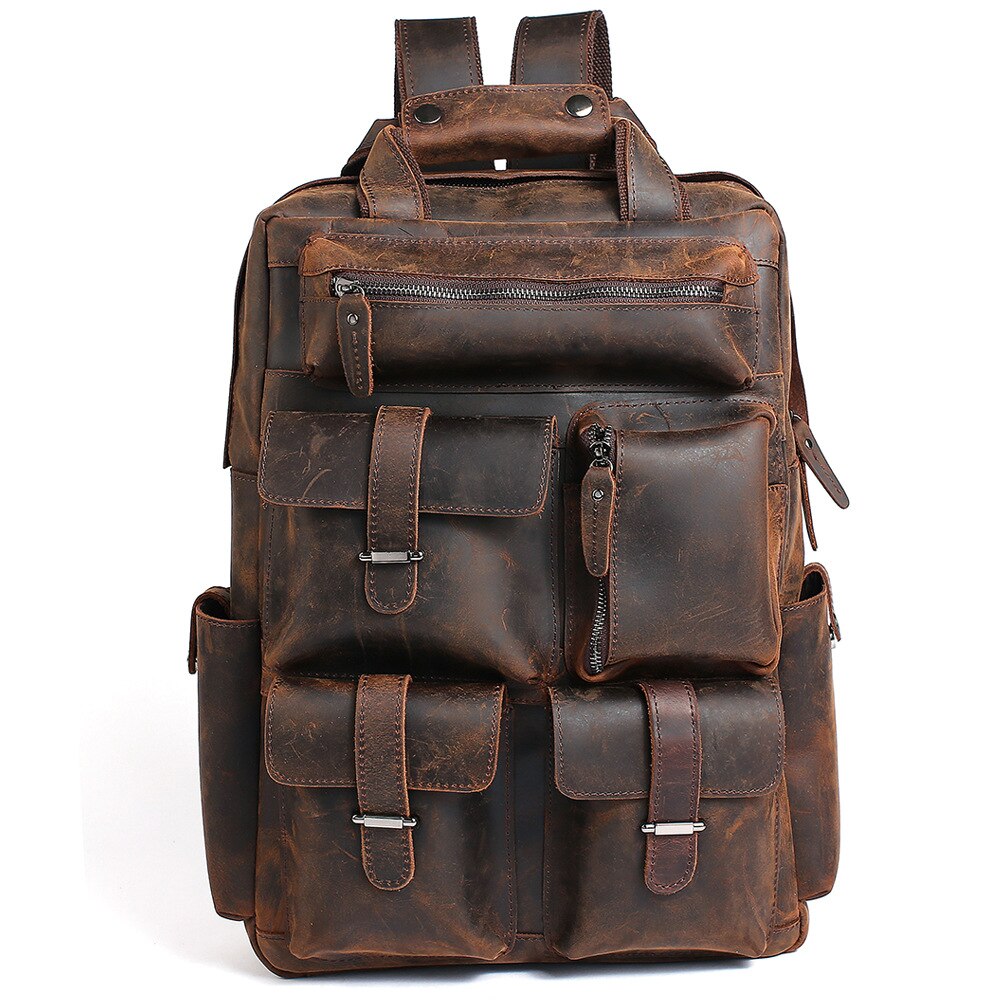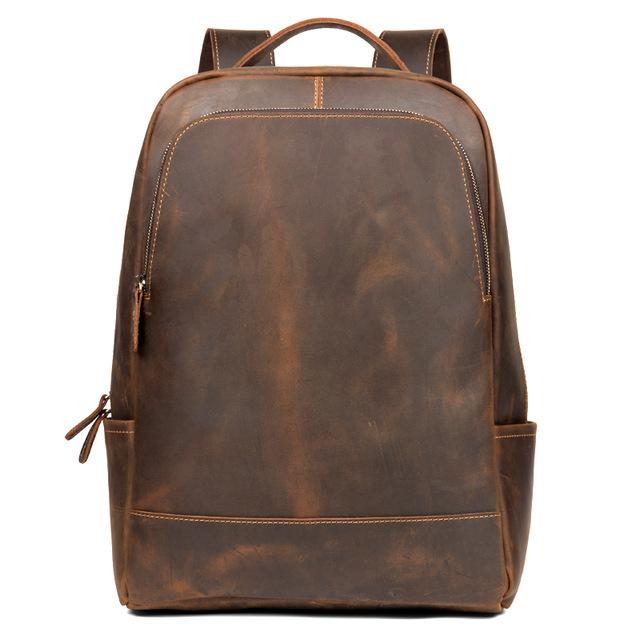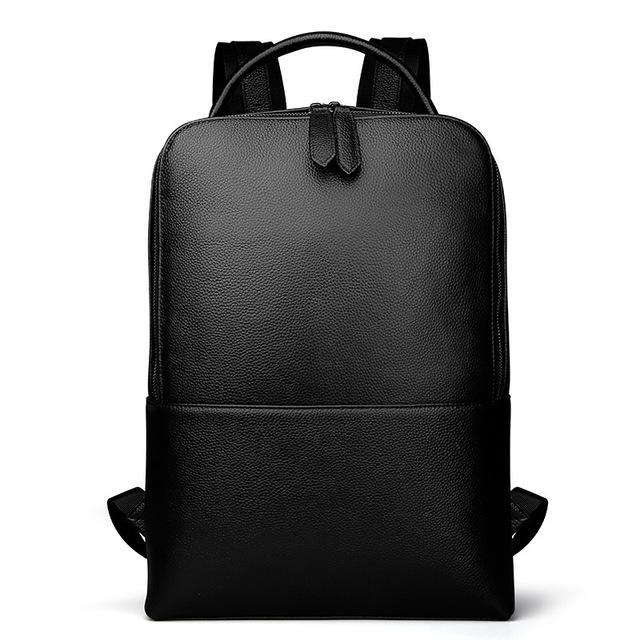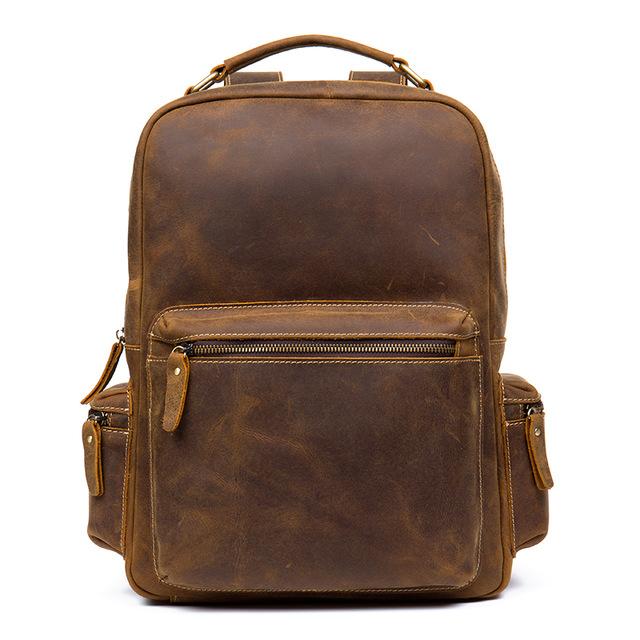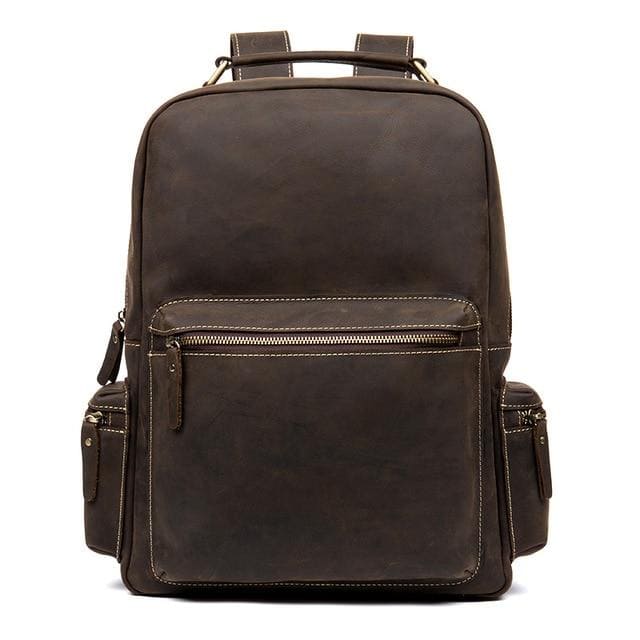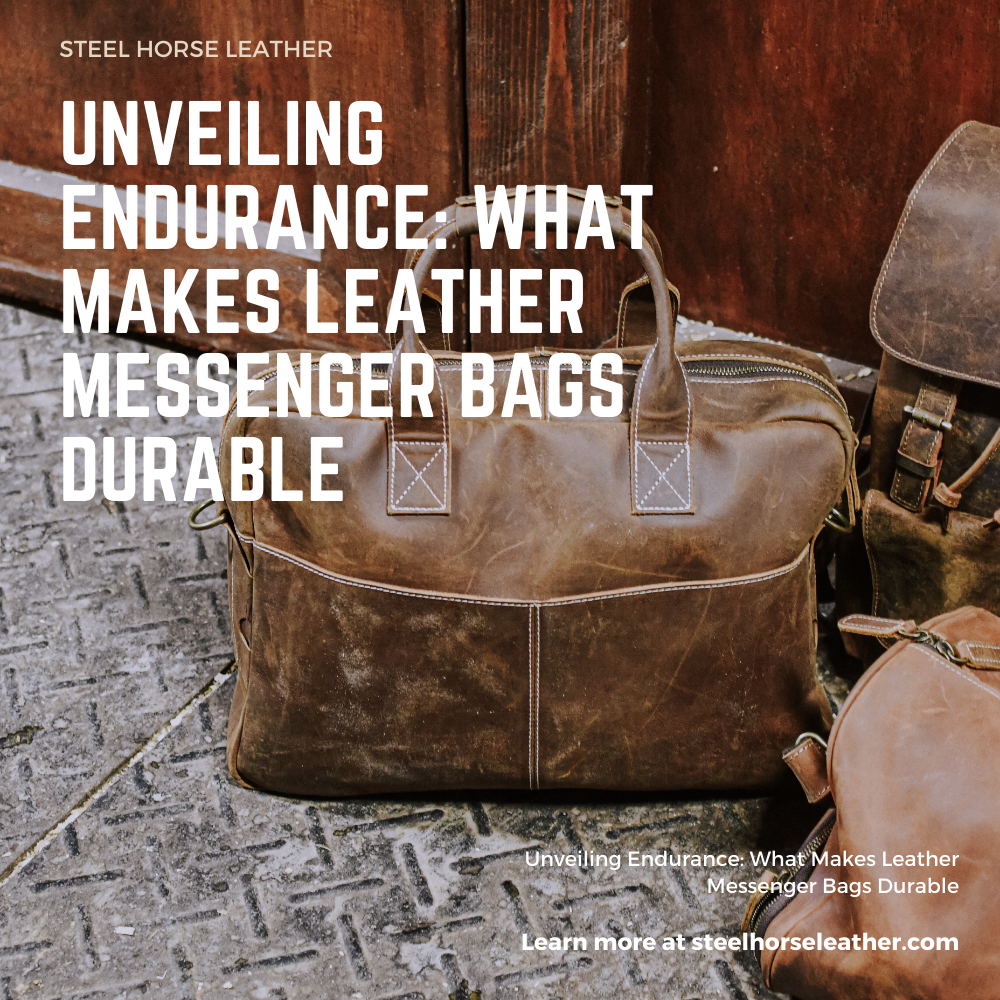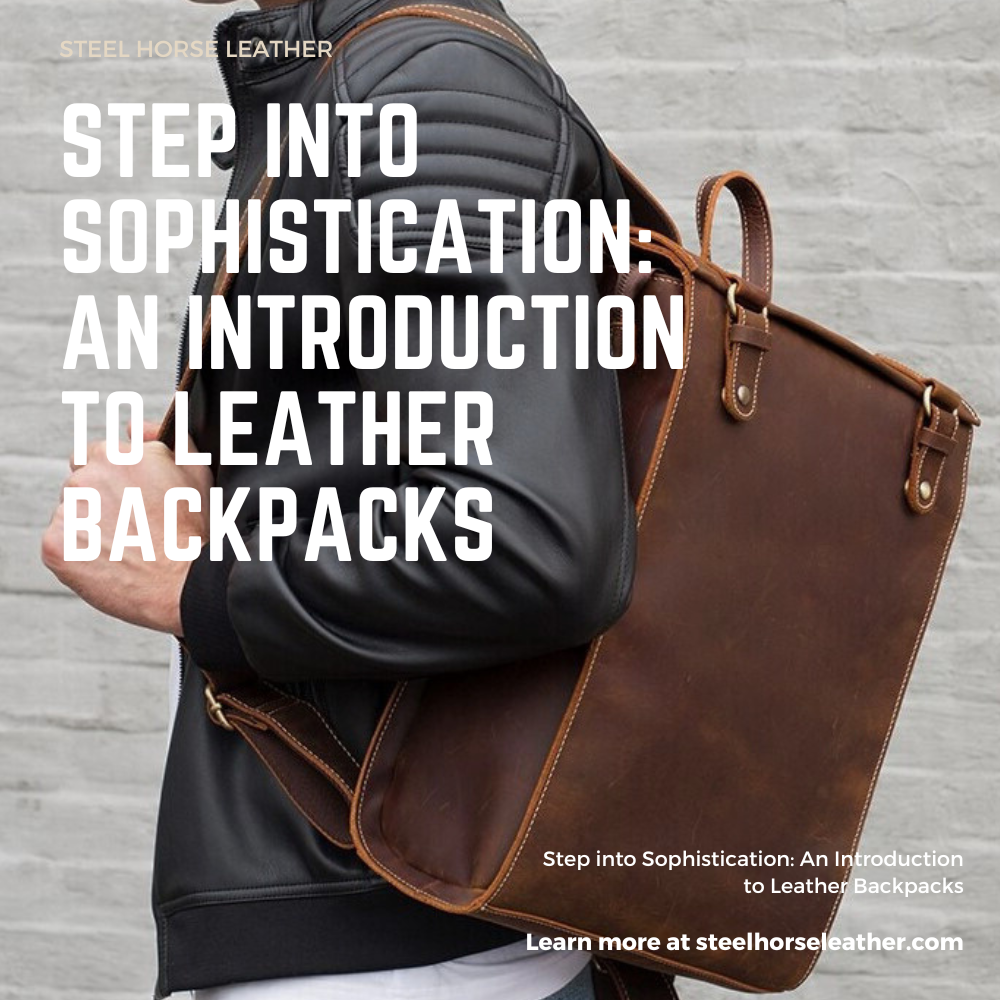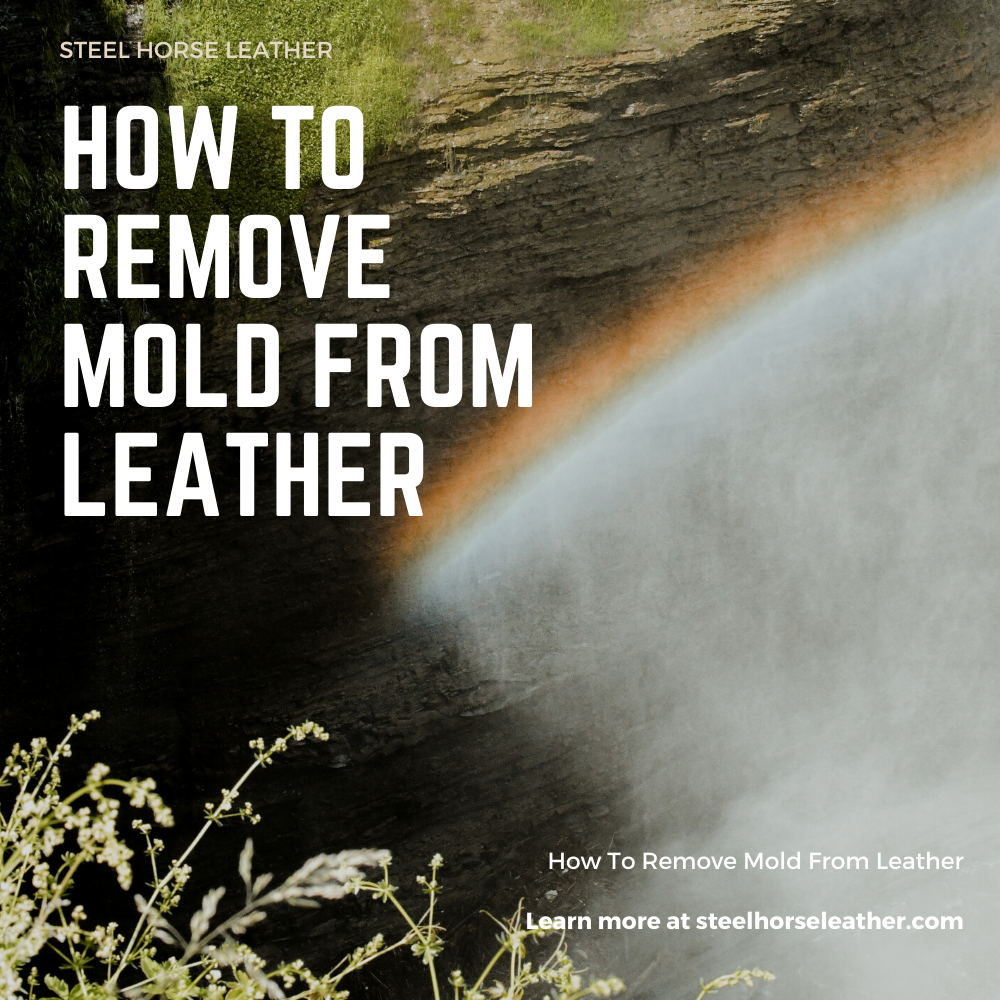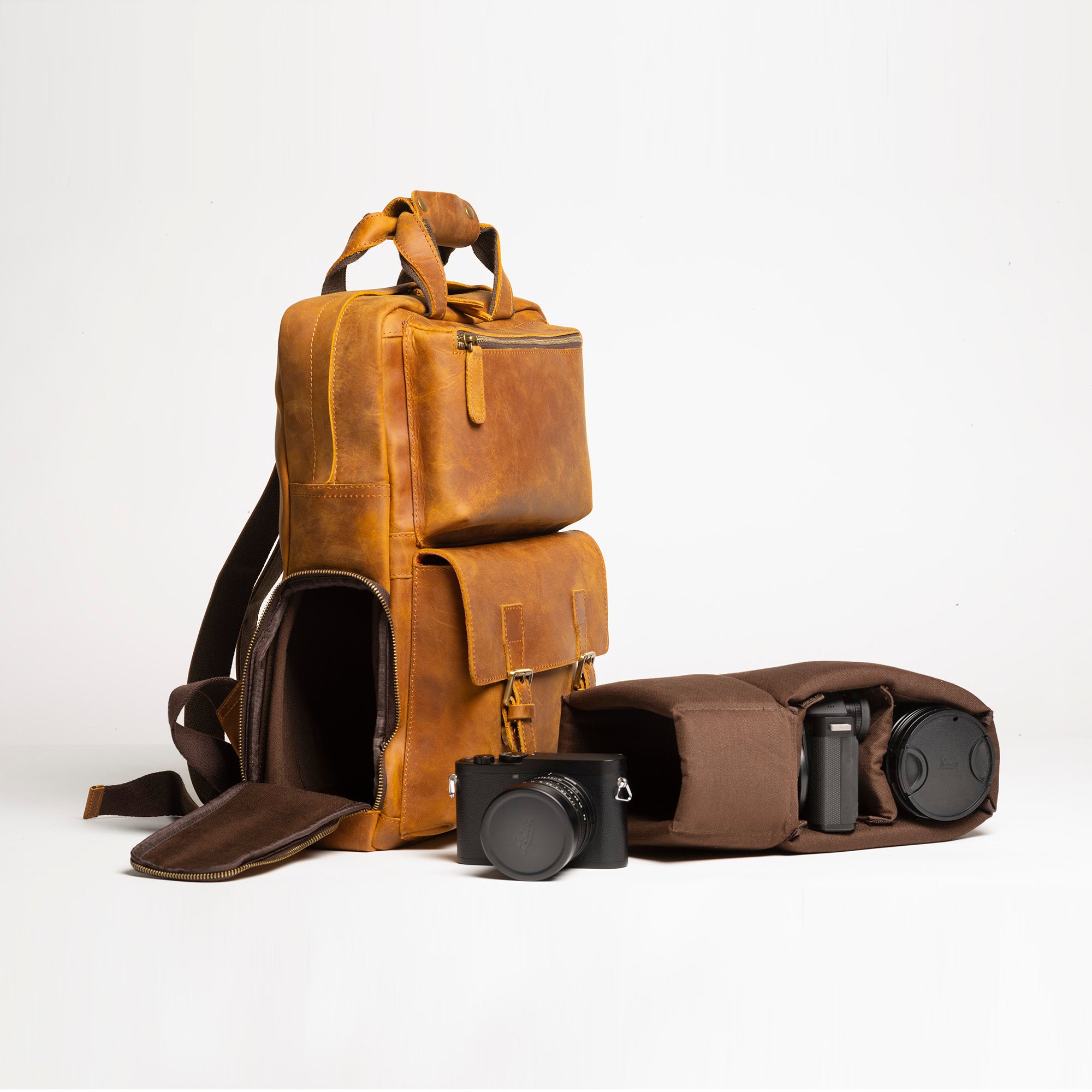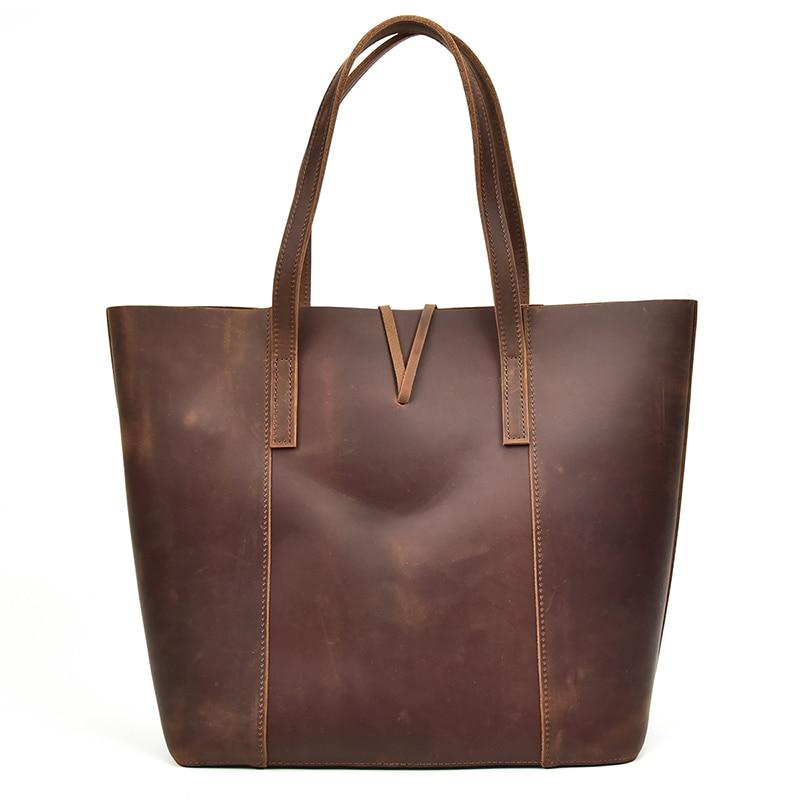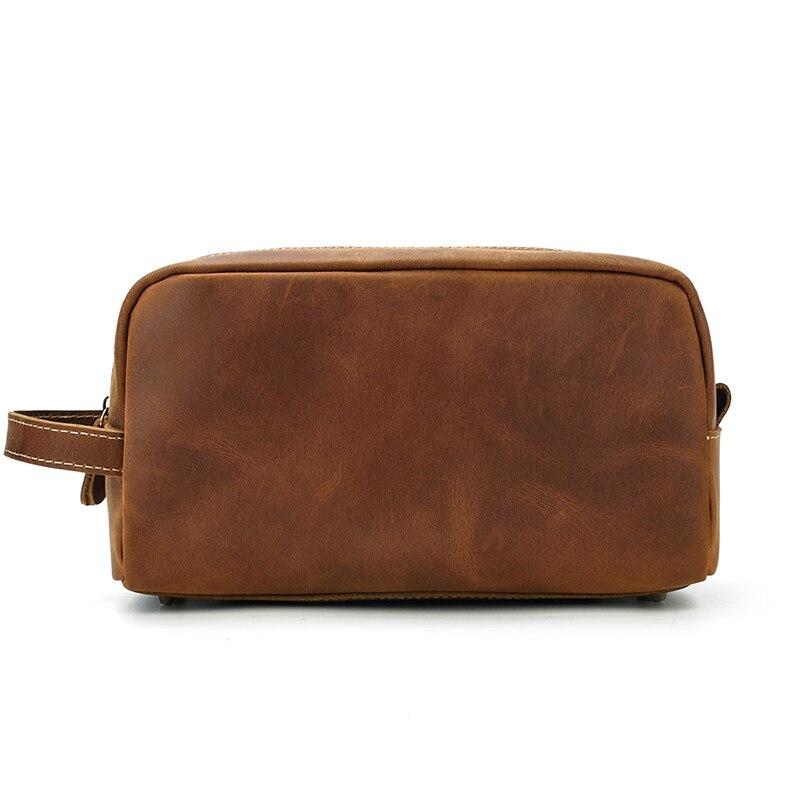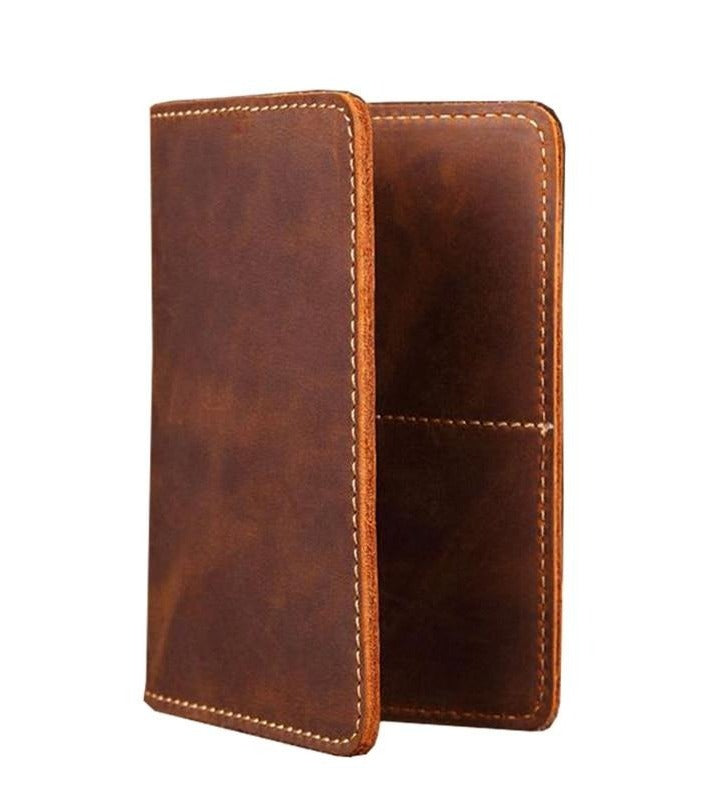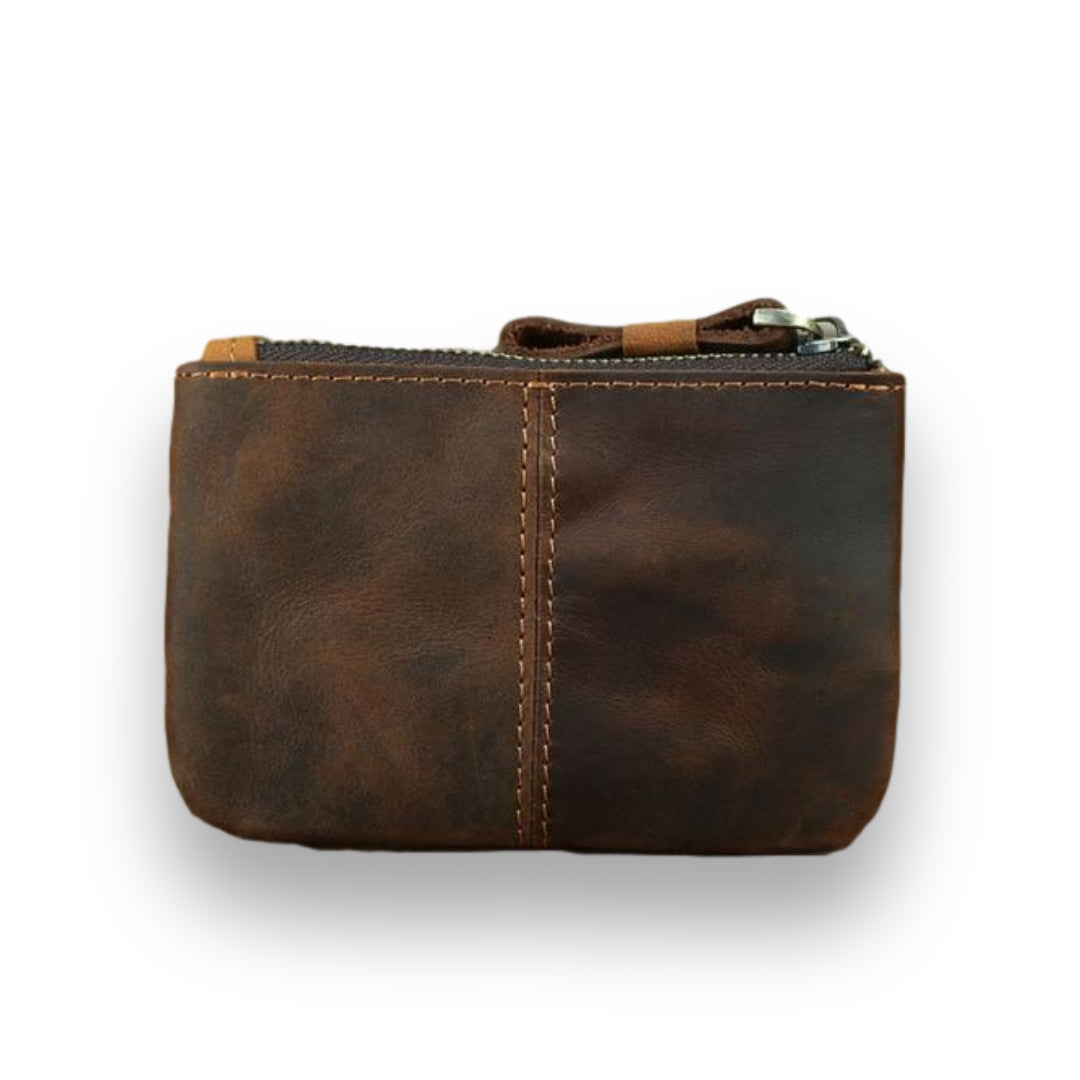Leather has been one of humanity's most enduring and versatile materials for thousands of years, evolving from ancient civilizations' basic tanning methods to today's sophisticated manufacturing processes. This comprehensive guide explores the rich history of the leather industry, from its origins with ancient Egyptians and Mesopotamians to the modern American leather market worth billions of dollars annually. Whether you're considering investing in a quality leather backpack or simply want to understand what makes leather products vary so dramatically in price and quality, this article provides essential insights into leather types, manufacturing processes, and buying considerations. You'll discover why full-grain leather commands premium prices, how different tanning methods affect durability, and what factors to consider when selecting the perfect leather backpack for your needs in today's competitive market.
Key Takeaways
-
The leather industry has ancient roots spanning thousands of years, with the United States now exporting nearly $3 billion worth of leather products annually, making it a global leader in raw materials supply.
-
Leather quality depends on four critical factors: the type of animal and breed, which portion of the skin is used, which layer of the hide is processed, and the skill level of the tanning and finishing process.
-
Full-grain leather represents the highest quality option as it uses the complete top layer of hide with no surface alterations, while bonded leather made from scraps and dust represents the lowest grade available.
-
The leather manufacturing process involves four essential steps: preparation, tanning (using mineral, vegetable, or glutaraldehyde methods), re-tanning for desired characteristics, and finishing for final appearance and texture.
-
When purchasing leather backpacks, consider six key factors: color coordination with your wardrobe, appropriate size for your needs, backpack type and features, leather quality and type, price point matching your budget, and intended use case.
Why Trust Our Leather Expertise?

At Steel Horse Leather, we bring decades of collective experience and passion to understanding the intricate world of leather craftsmanship. Our master artisans have dedicated their lives to perfecting the art of leather work, combining traditional methods with deep knowledge of leather types, tanning processes, and quality assessment. This expertise allows us to distinguish between full-grain, top-grain, and other leather varieties not just in theory, but through hands-on experience working with these materials daily.
We've invested considerable time in thoroughly vetting leather suppliers, understanding their sourcing practices, tanning methods, and quality standards. This comprehensive approach to the leather supply chain gives us unique insights into how different tanning processes—from vegetable tanning to chrome tanning—affect the final product's durability, appearance, and performance. Our obsessive attention to leather quality means we understand the nuances that make the difference between a leather bag that lasts a lifetime and one that disappoints after a few months.
When we share information about leather types, tanning processes, and quality factors in this guide, we're drawing from real-world experience in sourcing, evaluating, and crafting with these materials. This practical knowledge ensures that the insights we provide aren't just textbook definitions, but actionable information that will help you make informed decisions about your leather purchases.
History Of The Leather Industry
Leather backpacks NYC is the best choice for students and professionals who need a stylish, durable bag that can be used as an everyday carry or travel pack. It has been designed to fit all your daily essentials needs so you can stay organized and comfortable throughout the day.
Let's first take a look at the history of the tanning industry before we dig deeper into the different types, qualities, and characteristics of leather. Tanning leather has been around for hundreds of years. It's one of humankind's oldest industries. Tanning was practiced by ancient civilizations such as the Indians, Egyptians, Greeks, and Mesopotamians. Leather was used to create intricate clothing items such as footwear, gloves, and armor. It was also used for making buckets, water bottles, and weapons.
The Industrial Revolution brought many new technological advancements that improved the efficiency, safety, and hygiene of the tanning process. The leather industry in America has been around for hundreds of years. It grew with the increasing population throughout the 18th Century. By 1850, there were more than 1,000 tanneries in the United States. By 1840, the number had swollen to more than 8,000. Back then, the primary leather activity in the United States was shoemaking. By 1850, there were approximately 11,000 shoe manufacturing establishments in the United States.
Industry Statistics
The United States' leather industry exports more than its entire leather inventory. The United States is one of the top suppliers of raw materials for the global leather manufacturing industry Exports from the U.S. industry is worth nearly $3 billion per year.
In 2016, the hide, skin, and leather industry exported more than $2 billion in cattle, pig skins, and semi-processed leather products. According to the report, the global leather goods market is expected to grow steadily during the forecast period.
The Quality Of Leather
The quality of leather can vary greatly. You've probably seen different labels on leather products, such as top grain, genuine, or even vegetable tanned. These are just different kinds of leathers based on the quality of their material.
Buying leather is not enough; you need to know which type of leather to buy. To understand why certain materials last longer than others, and why a particular leather backpack costs thousands, while others sell for hundreds of dollars, you'll need to know why they're different. So, what is leather made from? The best quality leather depends on several important factors, including:
Type Of Animal And Type Of Breed
Different breeds of cows can produce different quality hides because of their genetics and environment. Cold climates tend not to have insects that bite animals and cause them to scar as much as hot climates do. Some breeds might be better suited for certain climates than others because of their hair or skin thickness.
Portion Of The Skin Removed From The Hide
Depending on which part of the animal hides you use, you may get differenttypes of leather. For example, the lower portion tends to be made up of loose fibers that form the hide. The looser fibers absorb water and swell when wet. Lower portions of the skin also tend to be marked up by insects and scratches like barbed wire fences. There are also more lines in the skin around the eyes, neck, and head than there are elsewhere. These scars and wrinkles are permanent and are almost impossible for them to be removed during the tanning process.
The Layer Of The Skin That Is Used (Top, Full, Split)
Different layers within the skin also have an enormous impact on the quality of the hide. Full-grain leather is the best because it has the most durable finish. The term "full" refers to the complete hide that has been stripped from its flesh and fat. Split leather is obtained by separating the hides into strips which are then divided into sections for further processing.
Quality And Skill Of The Processing And Tanning
The tanner's skill determines how well the hide will look after being processed. A skilled tanner can remove all imperfections and defects in the leather so that it looks smooth and uniform. This is done using machines and chemicals. Some processes don't need a machine to operate. They are called hand processes. Hand processes include brushing, sanding, scraping, buffing, and polishing. All these techniques help to improve the appearance and durability of the finished product.
Finally, knowing exactly what to do when taking a rawhide and processing it through tanning and finishing is an important skill and will influence the overall quality of the finished product. Italian leather is admired because of its quality and craftsmanship. Italian leather artisans are regarded as some of the best in the world.
Process Of Making Leather

As mentioned earlier, leather comes in many different types. All types of leather need to go through four basic steps before they're ready for use. These include prepping, tanning, retanning, and finishing the leather. Sometimes, a further step of surface treatment may be added to the basic process. Before sending to the leather tannery, the animal hide needs to be cured. Tanning is the first crucial step toward obtaining leather.
Usually, the animal has been slaughtered and its skin removed before the body heat leaves its tissues. The freshly removed skin is immediately cured with salt so that it dries out quickly. The skin should be left in the sun for as long as it takes to become completely dry. The cured skin or hide is then transported to tanneries for further treatment.
Preparatory Steps
Before tanning, the cured skin or hide must be prepared. Each of these processes removes unwanted raw skin components. However, they serve different purposes. Depending on the quality and type, the tannery may not perform some of them.
Tanning
The primary purpose of tanning hides is to produce a durable material from raw animal hide. Essentially, tanning turns the protein of the raw hide into a durable material. There are three main types of tanning processes: mineral tanning, vegetable tanning, and glutaraldehyde tanning.
Re-Tanning
Re-tannage converts the tanned leather products into marketable products. The type of chemicals used in this procedure depends on the desired color and finish in the final product.
Finishing
This is the final step where finishing touches are added so that the leather looks like the desired product. These include color, texture, thickness, and surface patterns.
Different Types Of Leather
There are generally four types of leather. They include full-grain leather, top grain leather, corrected grain leather, and bonded leather. You can see how the fibers run both vertically and horizontally in different parts of the skin.
Leather with more horizontal fibers wears faster than leather with vertical fibers because they can easily pull apart. Running fibers vertically is the strongest. The higher the number of vertical fiber strands, the better.
There are four basic types of natural leathers, but they come in a wide variety of options based on the percentages of organic materials, durability, and the type of finishing process used. Below are some examples.
Full Grain Leather
Full-grain leather is made from the top layer of cowhide. Full-grain leather has all the grains of the original hide in it. This type of leather is tough because it has no surface alterations or splitting, but it also has imperfections because it was not altered by any processes.
It is the highest-quality leather and the only one that is suitable for saddlebacks. Therefore, it is also the highest priced. It's difficult working with this leather material. It absorbs body oils, which gives it a distinctive look, and develops apatina, which makes it popular. Common uses are Saddlebacks and rare leather products.
Top Grain Leather
Top grain is the highest quality leather available. To get top grain leather, the outermost layer of skin from bleached hides is split. Sanding the surface removes any inherent imperfections. Pigmentation or staking gives the leather an attractive appearance.
Full-grain leather has a rougher texture than top-grain leather. Because this type of leather is so strong and durable, it stretches permanently over time. Used to make suede and nubucks. High-end products, such things as handbags and jackets are made from top-grain leather. Common uses are suede and nubuck manufacturing, making high-end bags and jackets.
Corrected Grain (Bottom Cut/Split) Leather
Corrected grain or genuine leather is made from the skin layers remaining after the top is split away and forms the corium predominantly. Used for applications that don't require it to be soft like furniture back and sides. It also removes any natural imperfections using polish. Spray-painted and embossed with a leather-like pattern to resemble a natural appearance. However, the processing changes the natural breathability of the leather, which may affect its performance. Common uses are making jackets, handbags, messenger bags, accessories (like belts), footwear, and furniture.
Bonded Leather
Bonded leather is from leftover parts of the animal's skin. This includes the dust and shavings. They combine together using latex on top of an elastic sheet. Sprayed with a clear lacquer finish to look like full or genuine leather. You cannot determine the percentage of natural materials used in a product without the manufacturer disclosing it. Bonded leather is one of the lowest grades of leather. It's the cheapest. Common uses are making furniture and various fashion accessories
Aniline Leather
It is the most naturally-sourced leather with minimal resistance to staining. Soft and tanned animal hides are usually subject to death in a dyeing vat. Anilinedye is a translucent and water-soluble dye that brings out the natural markings, scarring, and wrinkles in the skin.
It develops a natural sheen over time. It is suitable for only high-quality animal skins, so it is one of the highest-priced leathers in the world You need to keep it clean and well maintained.
Semi-Aniline Leather
Semi-aniline leather consists of a thin layer of color applied to the top of the leather. It has a stronger hold than aniline leather but retains its natural appearance. It also has stain resistance to some degree.
Antique Grain Leather
Get the rugged appearance of antique or vintage leather. Covered with an uneven or partially removed top coat revealing a pale undercoat. This weathered look usually attracts most shoppers, especially when buying leather accessories and furniture.
Chrome-Free Leather
Chrome-free leather comes from alternative tanning processes like vegetable tanning or aldehyde tanning. Because of the environmental pollution caused by the chrome-based tannery process, many governments and tanneries have adopted alternative tanning processes. The processed leather has most of the qualities of chrome-tanned leather, including higher shrink resistance, more resiliency, and flexural strength, but not all of them. Furthermore, there are no toxic emissions polluting the environment.
Chrome Tanned Leather
Chrome-tanned hides use chromium salts instead of vegetable tanning or aldehyde chemicals to tan. Chrome-tanned leather is supple and resilient, but not as durable as natural leather. It's also less resistant to water than natural leather. You can use a number of different dyes to produce leather in various vibrant colors.
However, chrome tan has extremely grave environmental costs. Especially in developing countries. The lack of proper waste disposal methods often allows the toxic wastewater from factories to seep into the groundwater supplies and also affects the surrounding soil. Chrome leather is unsuitable for printing patterns and stamps because of its softness.
Corrected Grain Pigmented Leather
During the preparation of corrected grain pigmented leathers, manufacturers subject the hides' surface to sanding and buffering to remove imperfections such as scarring and bite marks. Many manufacturers use an embossing process to create a textured surface for the product. They then spray a protective coating over the surface. This coating makes the leather look more plasticky.
Depending on the type of embossing and pigments used, the look of corrected grain leather can vary considerably. There are different types of corrected grain leather. Usually, less corrected grain means a better leather quality. It is perhaps the most widely-used leather around the world.
Crust Leather
The tanning process may be referred to as either a chrome crust or vegetable crust depending on whether the skin has been treated with a chemical solution or not. It has all the characteristics including size, thickness, plumpness, softness, and graininess.
Embossed Leather
This is artificially stamped onto the natural grain of an animal hide. Using heat and high-pressure results in a unique pattern. Used to create embossed leather for a variety of applications, including upholstery, accessories, and so forth.
Blind embossing, gold stamping, and color imprinting are the most common types of embossing. Blind embossing involves printing patterns without any color, whereas gold embossing includes the use of gold films for printing. On the other hand, color film imprinting uses color films for printing.
Suede Leather
Suede is among the most popular leather types. It has a napped finish. It comes with an attractive finish made from the underside of the skin of animals such as sheep, goats, calves, pigs, and deer. This is thinner and less durable than leather, so it is also vulnerable to damage from scratches and scuffs. It is one of the most popular grades of leather because it looks good and feels great.
Premium Leather
Premium leather is usually thicker and stronger than regular leather. Used for shoes and bags. Premium leather is available in various colors and finishes. Some premium leathers have a smooth texture while others have a suedelike feel.
Vegan Leather
Vegan leather is similar to leather. But, unlike real leather, vegan leather does not contain any form of animal products. Made from soybeans and other plant materials. Although there is no direct comparison between the two. Vegan leather is a healthier alternative to real leather.
It creates environmentally friendly and sustainable leather substitutes. One of these inventions of a leather substitute made from cactus plants. As a plant-based material, this material is vegan and biodegradable. The finished product has a softness similar to that of real leather, and it can last for at least ten years. It may not be as durable as real leather but it's a fun new discovery for those looking for high-quality leather alternatives.
Guide For Buying The Best Leather Backpacks NYC

| Factor to Consider | Description / Key Aspects | Specific Advice / Examples |
|---|---|---|
| Overall Use / Purpose | The most essential factor: how you will use your new leather backpack. Bags should be chosen based on their intended use, not just because they are leather. | Avoid choosing a large duffel bag for the office or similar mismatches. Consider use for school, work, impressing others, overnight trips, hiking, protecting digital devices (laptops, phones, cameras). Leather bags should be useful. |
| The Color | The aesthetic appearance of the leather backpack's color. |
|
| The Size | The dimensions and capacity of the backpack. |
|
| The Type Of Backpack | Different designs and features of backpacks beyond just the material. |
|
| The Type Of Leather Backpack | The specific kind of leather used in the backpack's construction. |
|
| The Price | The cost of the leather backpack. |
|
| The Brand | The manufacturer or company producing the leather backpack. |
|
Leather backpacks are the most popular and versatile bags for men, women, and children alike. They can be used as a messenger bag or laptop bag, but they also make great travel bags, gym bags, school bags, and even baby carriers. Theleather backpack is one of the best-selling items. We carry a wide variety of styles and colors to suit your needs. Our selection includes backpacks with detachable shoulder straps, crossbody bags, messenger bags, briefcases, laptop bags, and more. You can choose from different materials like cowhide, vegetable-tanned leathers, vegan leathers, and genuine suede.
When buying a genuine leather item, you need to consider carefully and look closely at the quality of leather. Most average shoppers don't care if their backpacks are made of real leather or fake leather. But, many of us know that isn't true. Leather manufacturers often use different types of materials, depending on the end products they produce.
When you're ready to make a purchase, you need to know where to buy leather and how to buy the best leather backpack. We've got all the info you need to make an informed decision. We need to consider a lot of factors when choosing a bag. Things such as the color, the size, the type, the kind of leather used, the price, and the brand. However, the most essential thing to think about is how you will use your new leather backpack. It's important to choose a leather bag based on its use, not just because it's leather. If not, you'd be utterly disappointed if you chose a large duffel bag for the office or something similar to it.
The Color
It's important to consider the color of the backpack when buying it. You should pay attention to the color of the leather. It might seem like a small detail, but it actually makes a big difference.
If you want a classic style, then go for black leather to brown, gray, navy blue, burgundy, red, or even green leather. These colors give off a classy appearance. They work well with almost every outfit.
If you prefer a more modern look, then opt for white, cream, light blue, pink, yellow, orange, purple, or even turquoise. These colors add some brightness to your wardrobe. It's also possible to find leather bags that come in several shades. If you want to match your clothes perfectly, then pick one of these colors.
The Size
Consider size when choosing a backpack. Leather bags range from small to large. From small backpacks, and medium size messenger bags or tote bags, to large and heavy duffle bags. As the size increases, so too will its weight. To determine which bag is the best, you need to consider your body size and strength when comparing bags. Furthermore, you may want to think about what items will also be packed into your backpack.
Consider a backpack size that has the capacity to carry all your essential needs like gym clothes, books, a piece te of school supplies, toiletries, a water bottle, and other things you'll need during the day. This way, you won't have to worry about carrying around extra baggage.
The Type Of Backpack
Of course, because this is an article about leather backpacks in NYC, you'll need to consider the type of bags to choose from. There are different types of backpacks, including straps, handles, sleeves, pockets for your wallets, luggage, and zippers, each offering different types of features. Also, consider choosing the signature style that suits your personality. A lawyer, for example, would definitely look better in a leather briefcase than in a leather backpack.
A canvas backpack is the type of backpack that can be used as a regular backpack or messenger bag. They come in various sizes and colors. Some of them even have extra compartments inside so you don't need to carry around lots of stuff. Generally made of cotton, polyester, nylon, or hemp. These materials are durable and easy to clean. They are also lightweight and comfortable. Another advantage is that they are weatherproof. So you take this type of backpack anywhere without worrying.
Drawstring backpacks are another type of backpack. These are popular choices among travelers who prefer something simple yet functional. They are perfect for those who travel light and don't have much space for luggage. They are convenient because you won't have to dig into your suitcase every time you want to access these areas.
The Type Of Leather Backpack
If you think there's only one type of leather backpack in NYC, then you're wrong. There is a variety of leathers to choose from. Leathers of different types will also have different qualities. There are different kinds of leathers, including soft ones, thick ones, and ones that are flexible. Furthermore, there are many types to choose from, including high-quality leather and low-quality leather. There is also real leather and there is also faux leather.
The Price
If you're thinking of buying leather goods like leather backpacks, then the price will definitely be a factor. The price will depend on the quality of the leather. If you're looking for cheap leather, you might want to consider buying cheaper leather instead. There are other types of leather that are less expensive than the one you're looking for. Top grain leather is one of the best types of leather for both quality and price. Furthermore, most of the real cowhide is great in quality although there are some that might be a little bit more expensive than others. Fake leather is cheap but compromises the quality of the material used. Therefore, it is important to do your research when blindly buying a leather bag just because you think it looks good.
The Use
When choosing between different types of leather backpacks, the one thing you might want to think about most is how you will be using them. You should use is very important when choosing which bag to buy. You may want the bag for school, work, the office, for impressing your friends and family, or your clients. Furthermore, don't forget the fact that one of the main reasons why people buy leather bags is because they want them to be useful. Whether you go on an overnight weekend trip or a longer hike journey through the woods. Leather backpacks protect your fragile digital devices from carrying laptop computers and mobile phones, to housing cameras and accessories.
The Brand
Another important consideration is brand. This is especially true if you plan to purchase a new leather backpack that you love. Brands like us are well-known brands with excellent reputations and received several compliments. We make top-notch products at affordable prices and exclusive deals. However, there are also some lesser-known brands like in manhattan, that exclusively offers high-quality product at reasonable prices. It is always advisable to check out their websites before making any purchases. To avoid disappointment, we suggest that you read all reviews online before purchasing anything.
Frequently Asked Questions
How Can I Tell If I'm Getting Real Leather Versus Fake Leather?
Real leather will have natural imperfections, grain patterns, and a distinctive smell, while fake leather often appears too uniform and may have a chemical or plastic-like odor. Additionally, genuine leather will develop a patina over time and feel more supple, whereas synthetic alternatives tend to crack or peel with age.
Why Are Italian Leather Products Considered Superior?
Italian leather is renowned worldwide due to the exceptional skill and craftsmanship of Italian leather artisans, who are considered among the best globally. Their traditional techniques combined with quality materials and attention to detail result in superior finished products that command premium prices.
Is Vegetable-Tanned Leather Better Than Chrome-Tanned Leather?
Each has distinct advantages: vegetable-tanned leather is more environmentally friendly, develops beautiful patina over time, and is better for embossing, while chrome-tanned leather is more supple, water-resistant, and available in vibrant colors. The choice depends on your priorities regarding environmental impact, appearance, and intended use.
How Long Should A Quality Leather Backpack Last?
A well-made leather backpack using full-grain or top-grain leather can last 10-20 years or more with proper care, while lower-grade leathers like corrected grain may last 3-7 years. The longevity depends on the leather quality, construction methods, frequency of use, and maintenance practices.
What's The Difference Between Aniline And Semi-Aniline Leather?
Aniline leather is dyed with translucent dyes that preserve the natural markings and texture but offer minimal stain resistance, making it suitable only for premium hides. Semi-aniline leather has a thin protective coating applied, providing better stain resistance while maintaining much of the natural appearance, making it more practical for everyday use.
Conclusion
So, what was our conclusion? Well, we hope this article has helped you decide whether leather backpacks are worth buying. Our advice is that you should buy leather backpacks if you really need a durable, long-lasting, and stylish bag. When deciding on what kind of leather to get, you should look into its quality and durability first.
The above information should give you a pretty solid idea about what type of leather you want your bag to be made out of. If you're still unsure which type of leather will work best for your needs, then you should probably just go ahead and look at some samples. You'll know exactly what your leather will look like once you get them home.
Leather backpacks in NYC can get by anyone who wants to look stylish while protecting their belongings. They are perfect for business trips, leisure travels, and even everyday use. When shopping for leather backpacks, it is essential to know what you need and what you don't. Remember to shop around, compare prices, and read reviews.
Interactive Leather Quality Comparison Tool
Understanding the differences between leather types can be challenging when shopping for your perfect leather backpack. This interactive comparison tool lets you explore the key characteristics, durability, and price points of different leather grades mentioned in our comprehensive guide. Simply select any two leather types to see a side-by-side comparison of their properties, helping you make an informed decision based on your specific needs and budget.
























